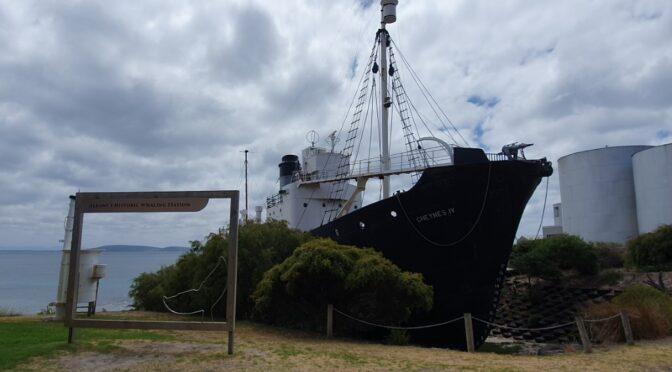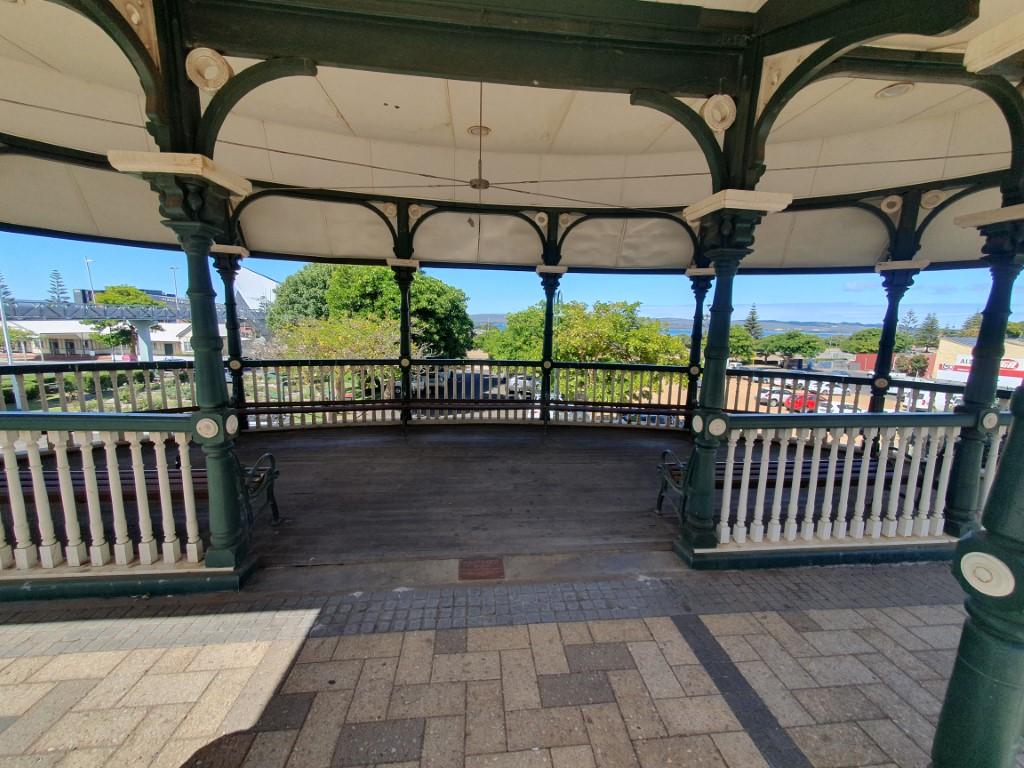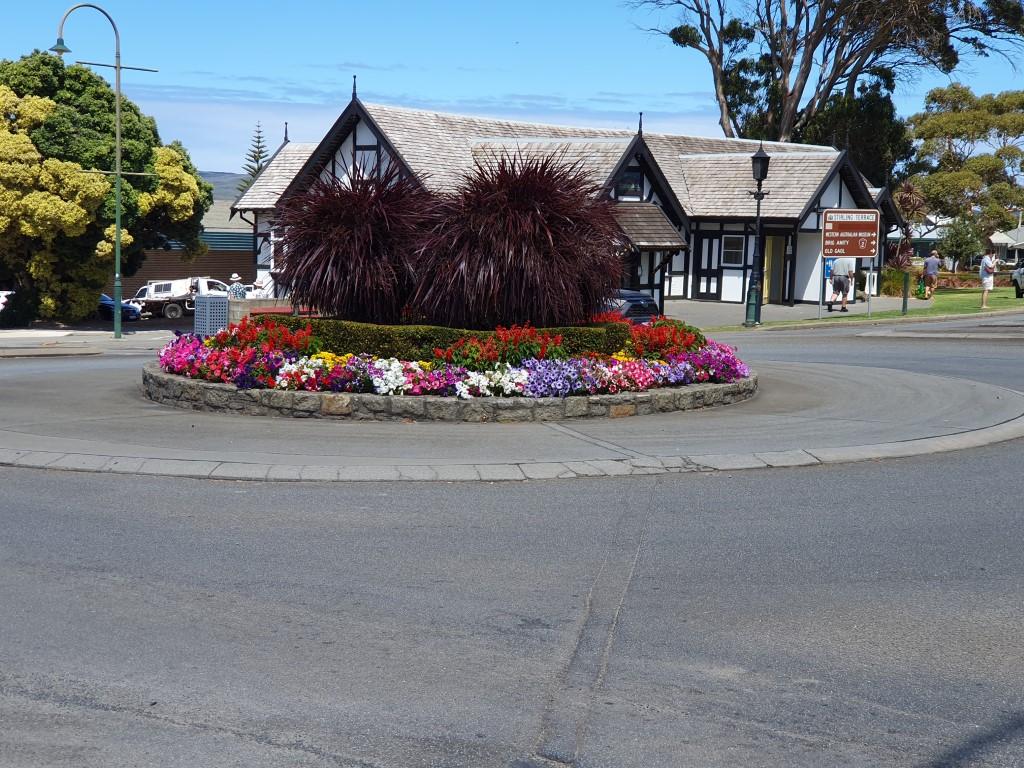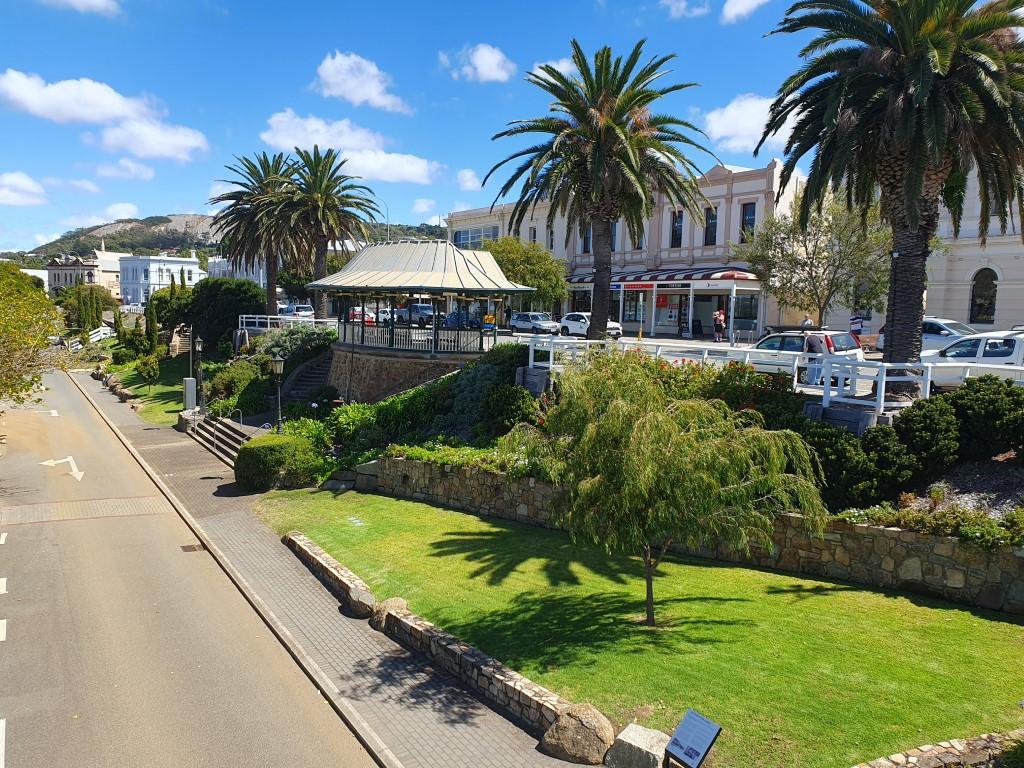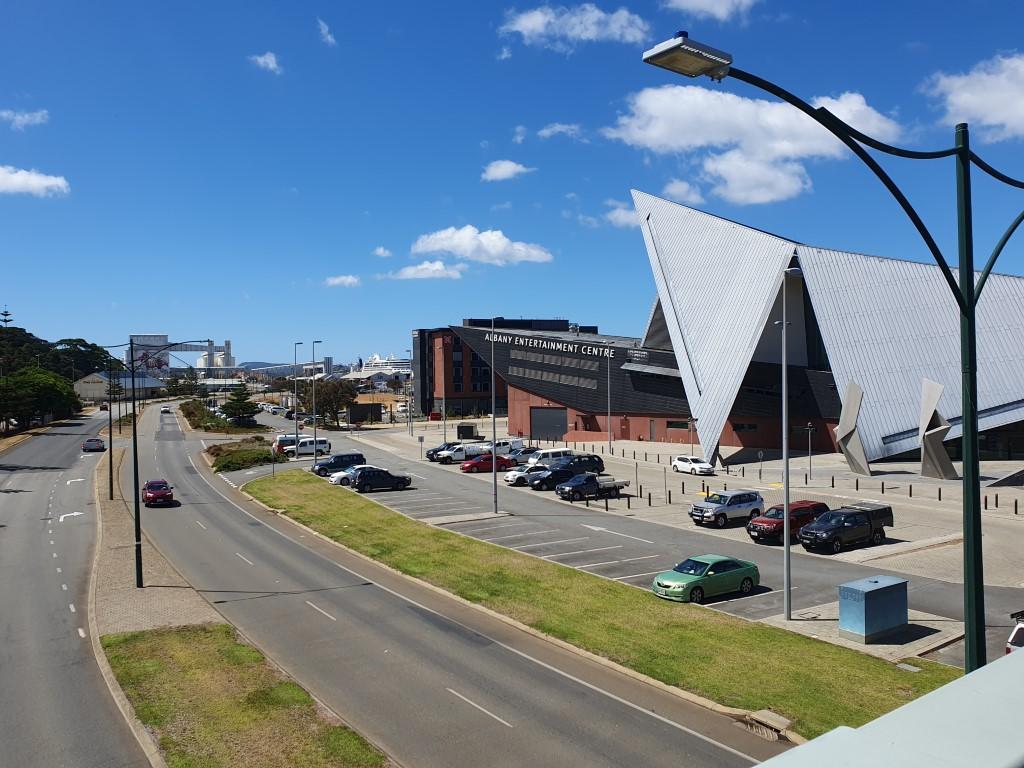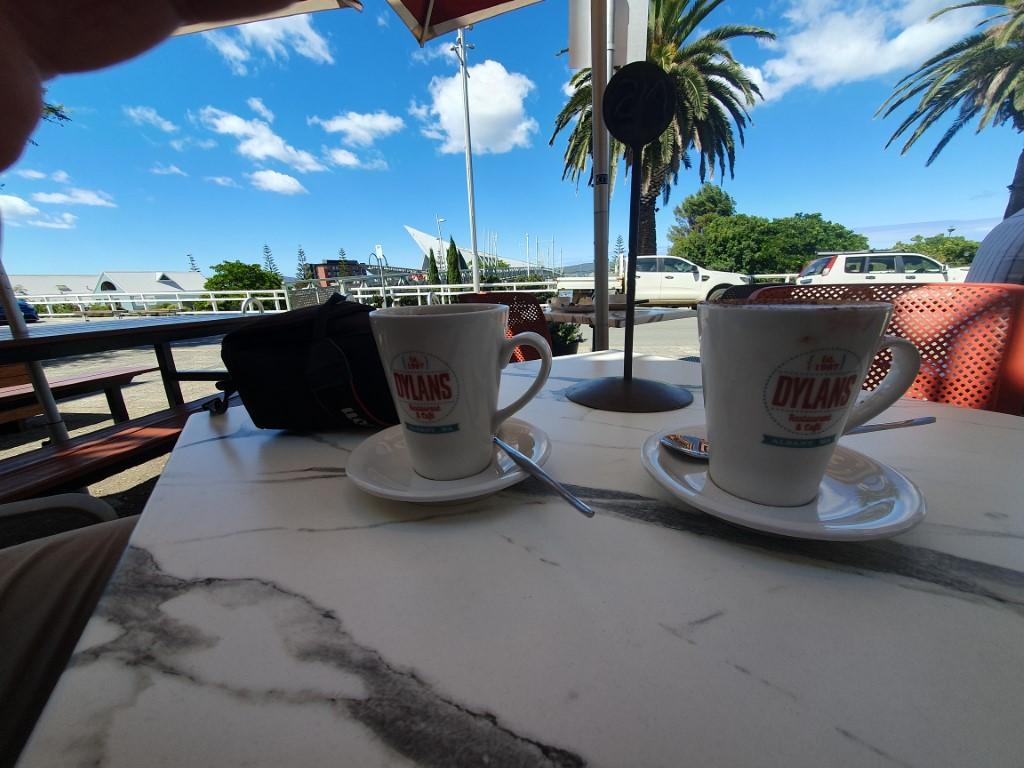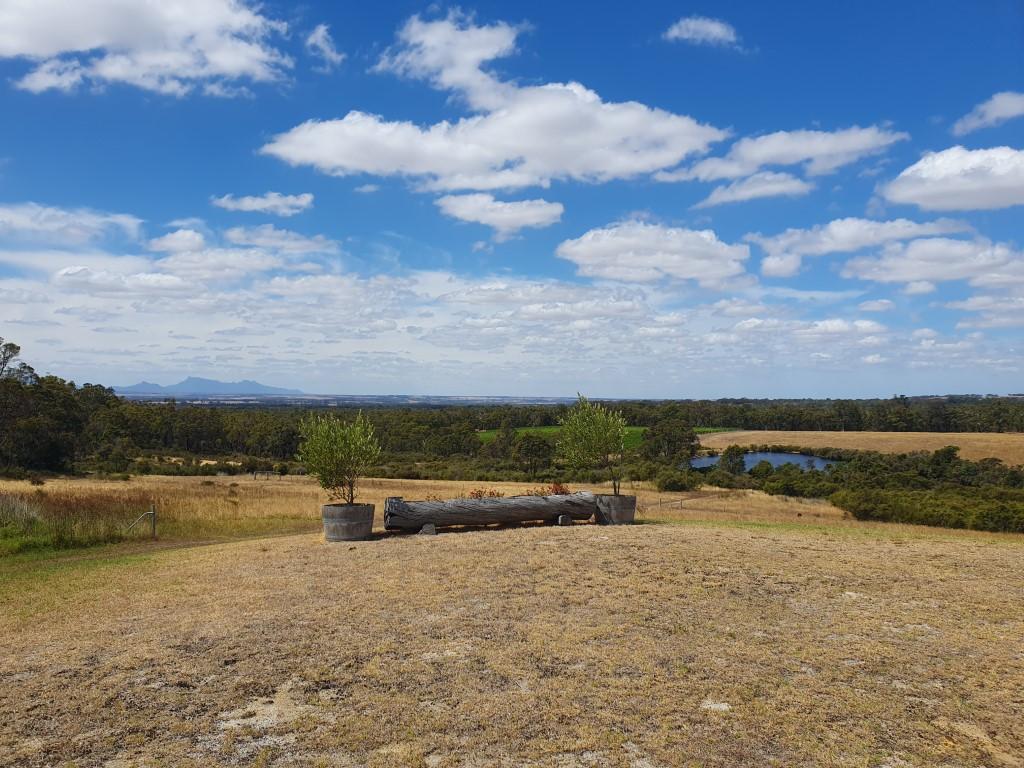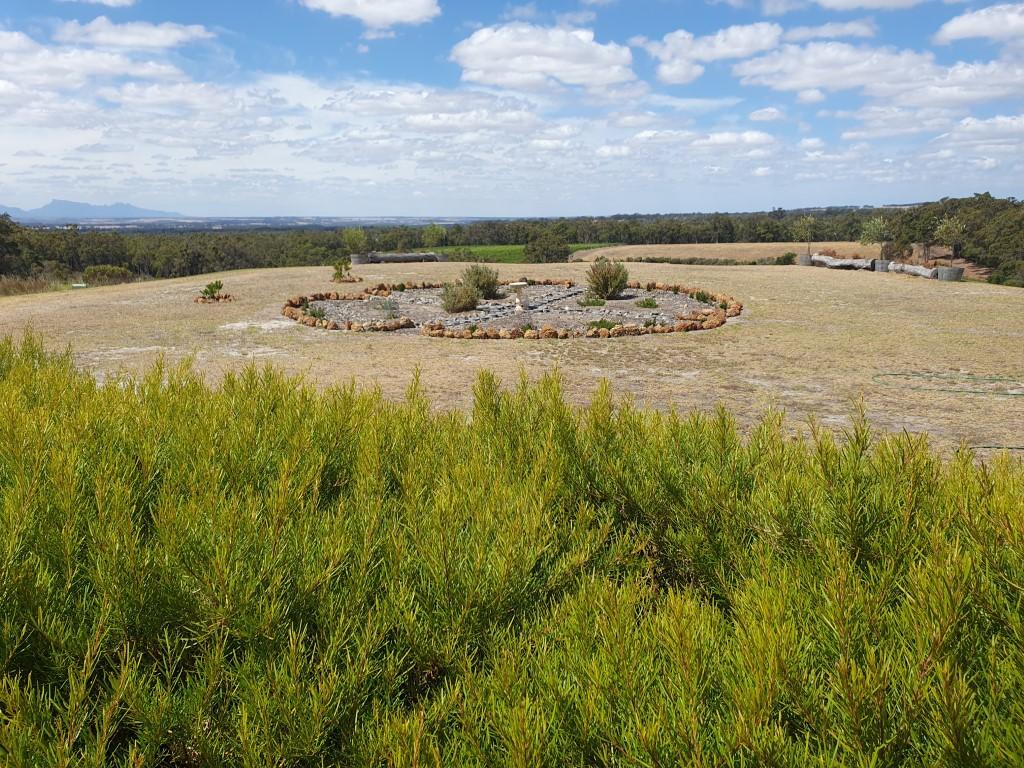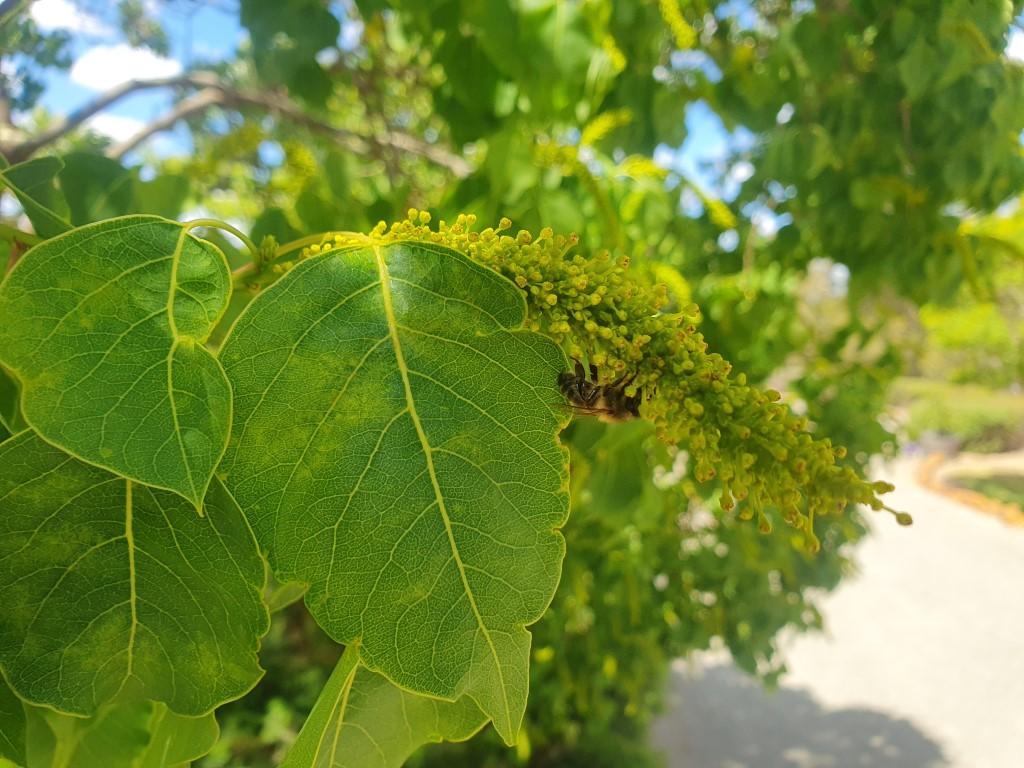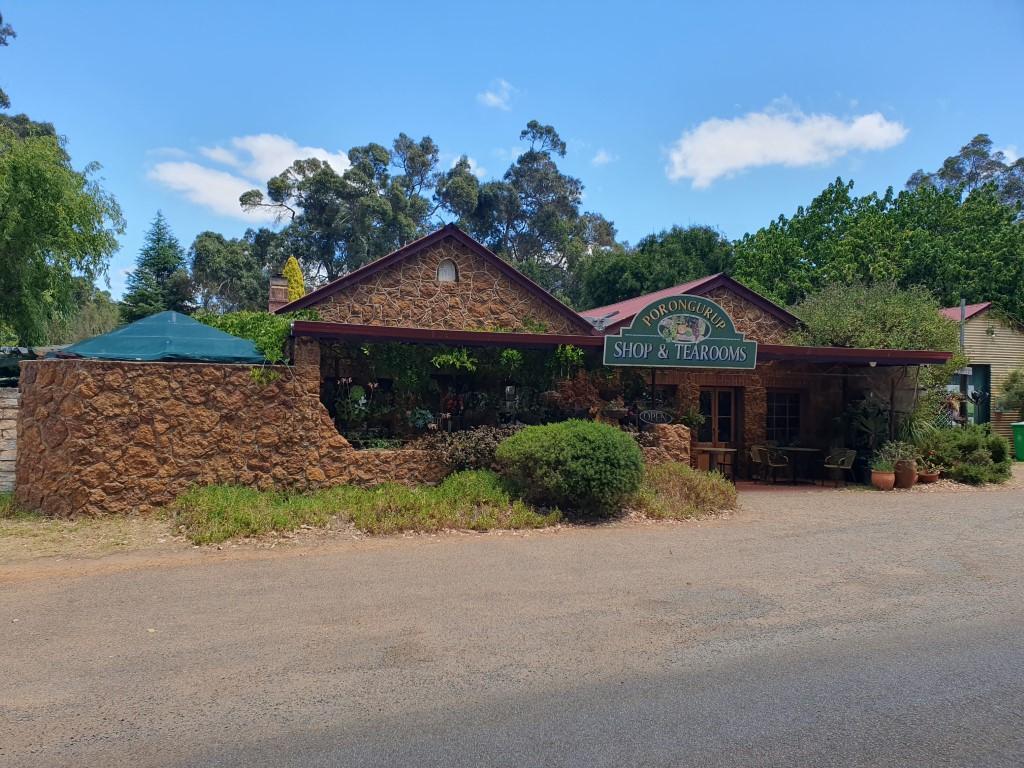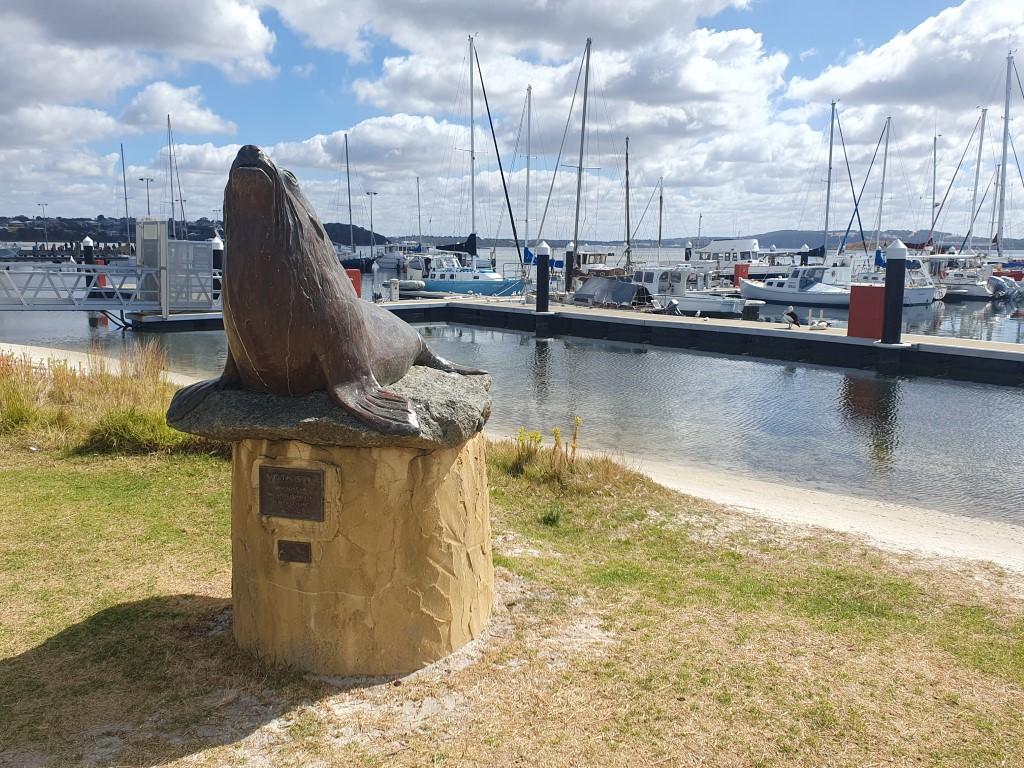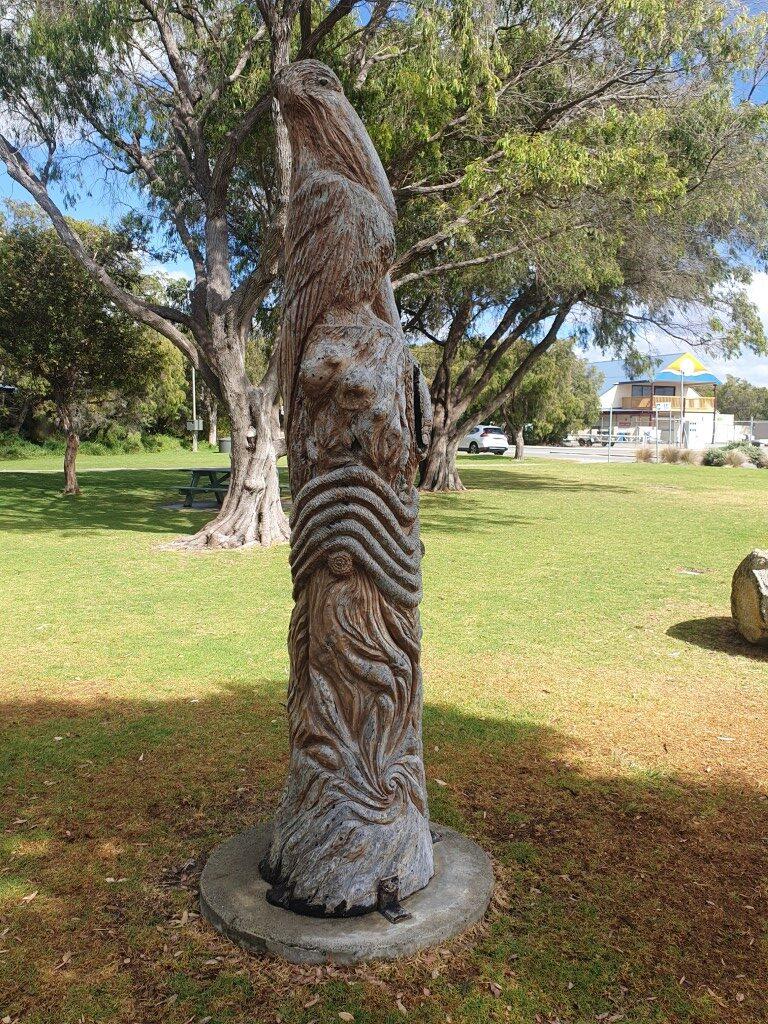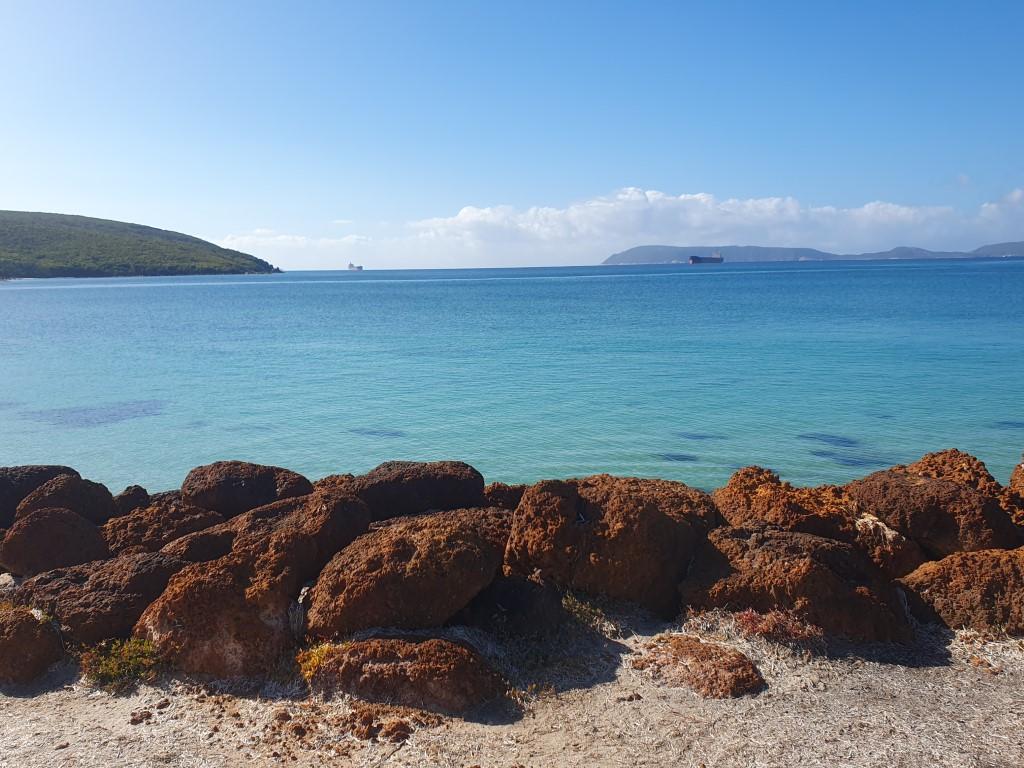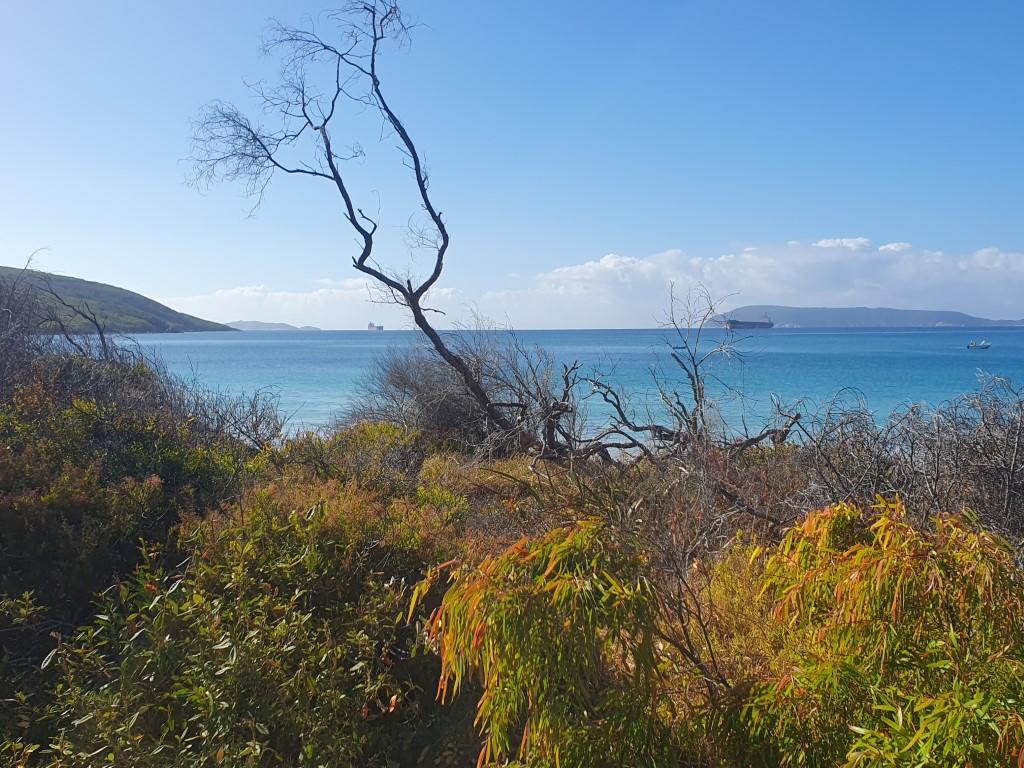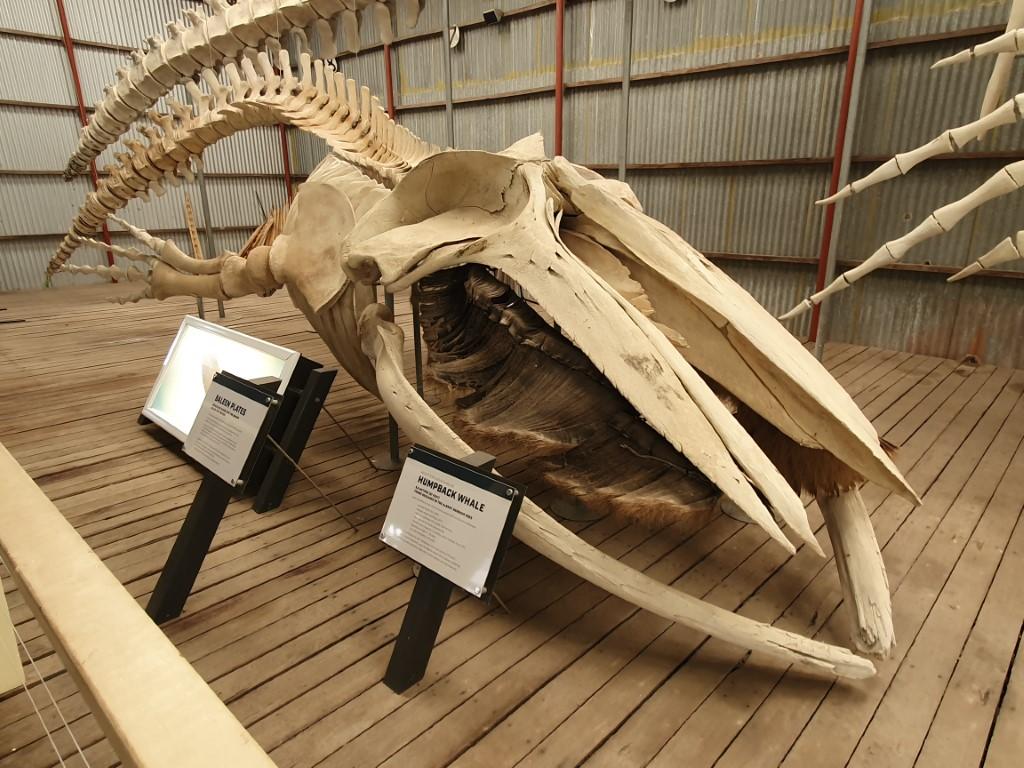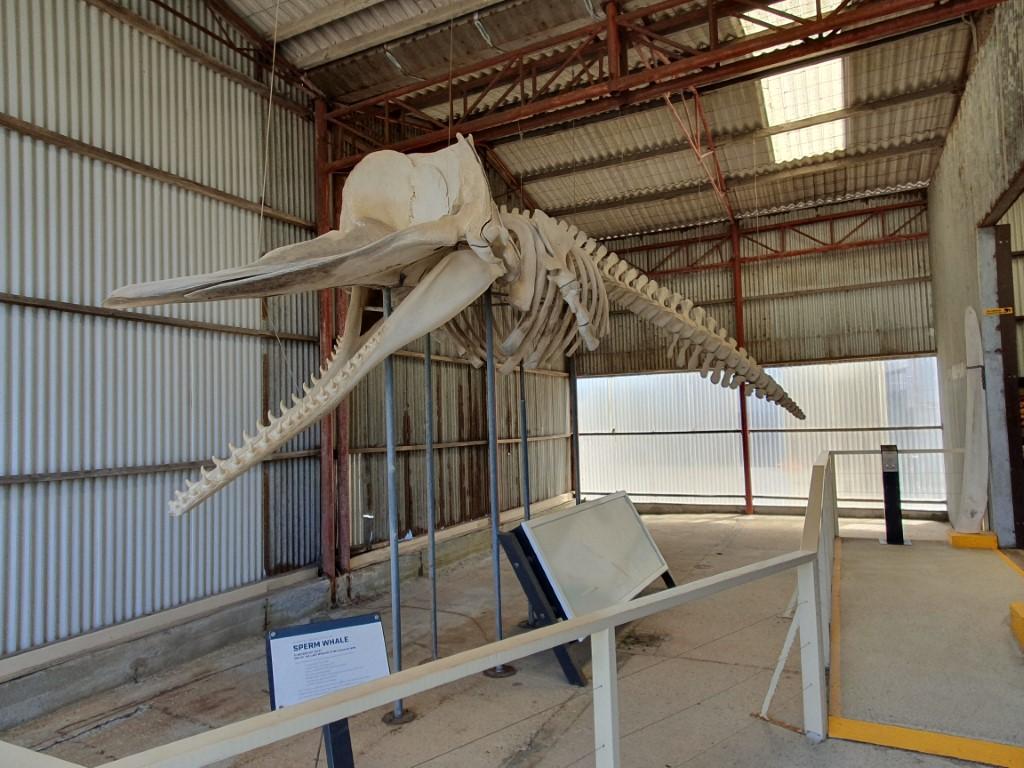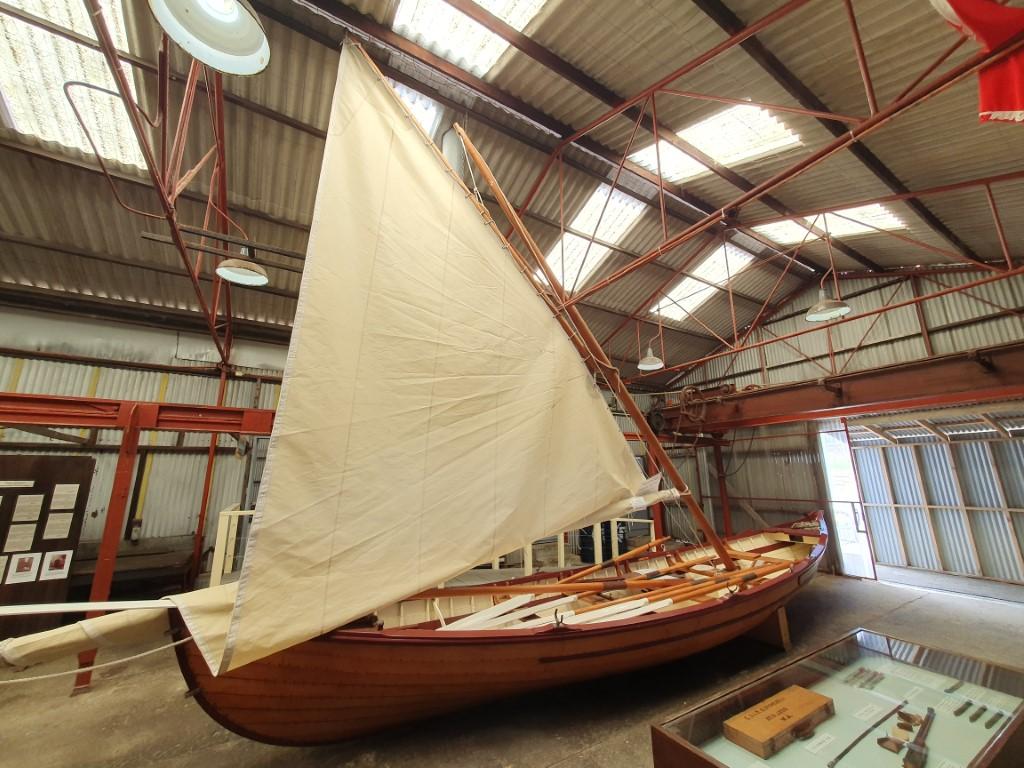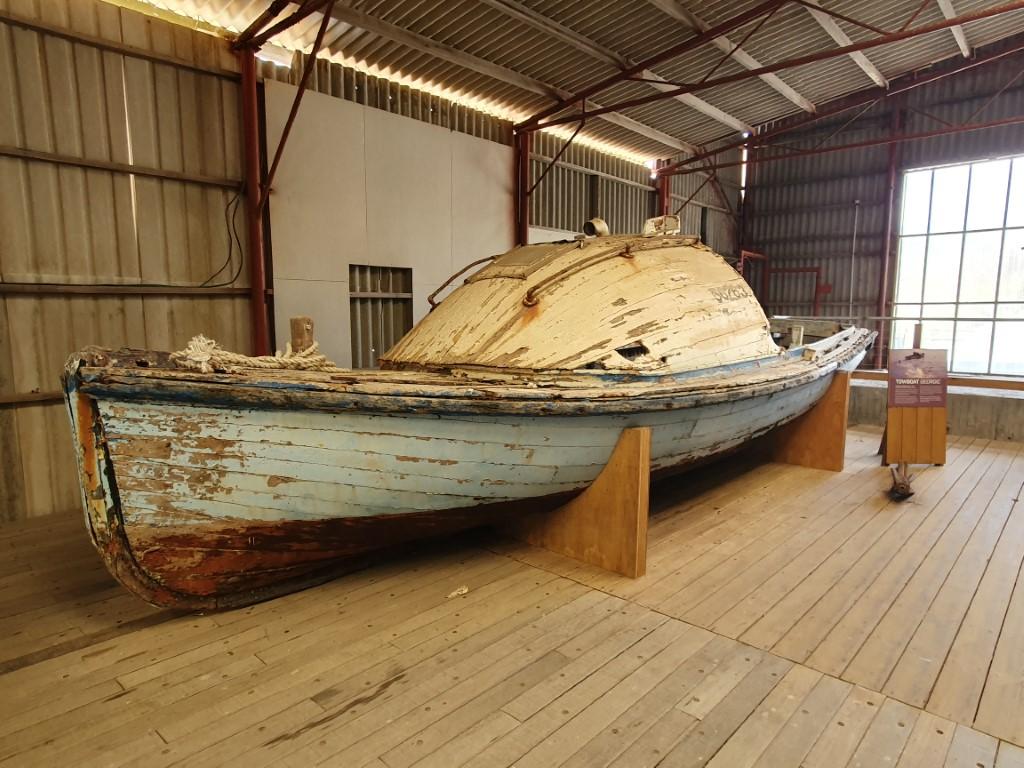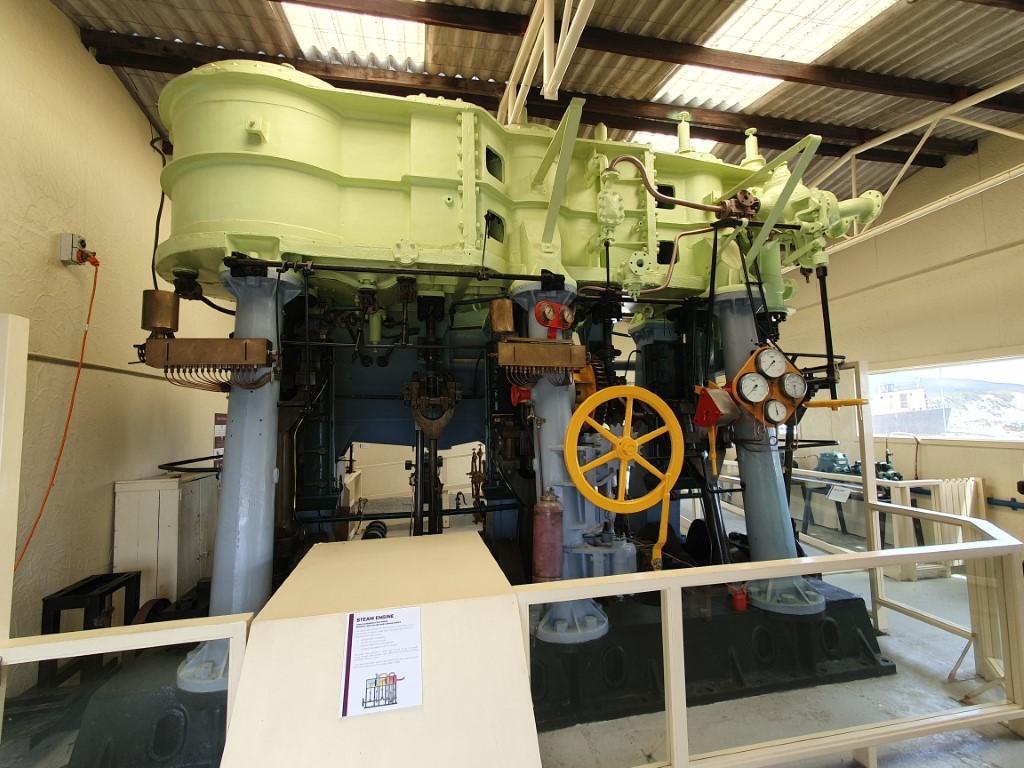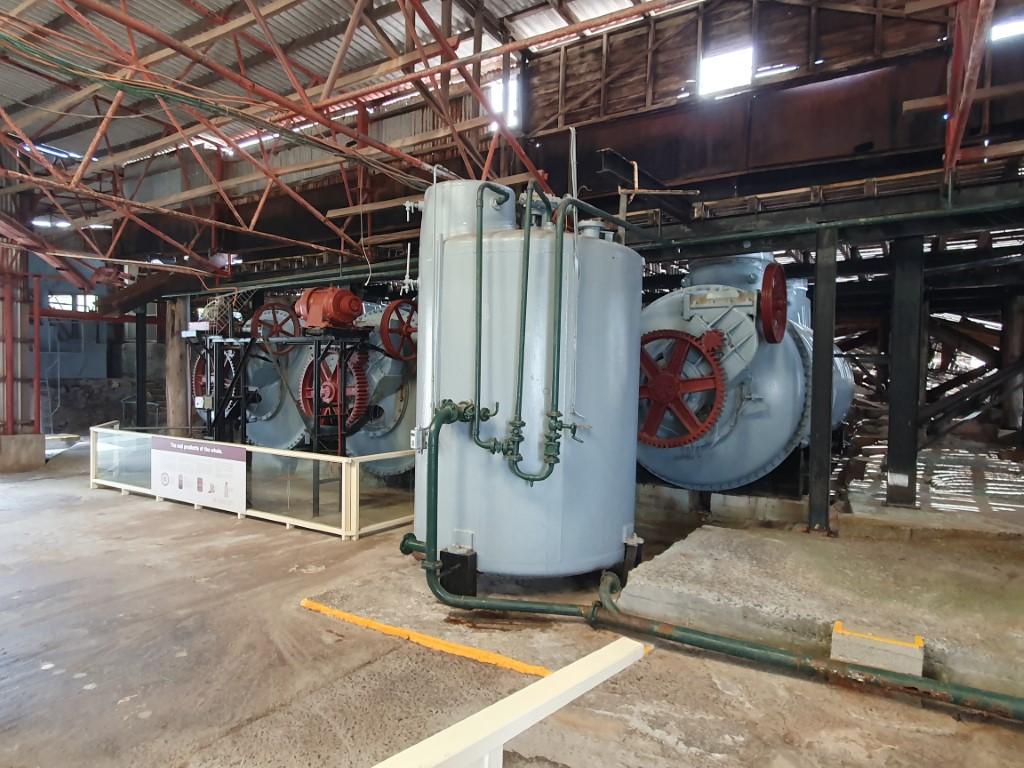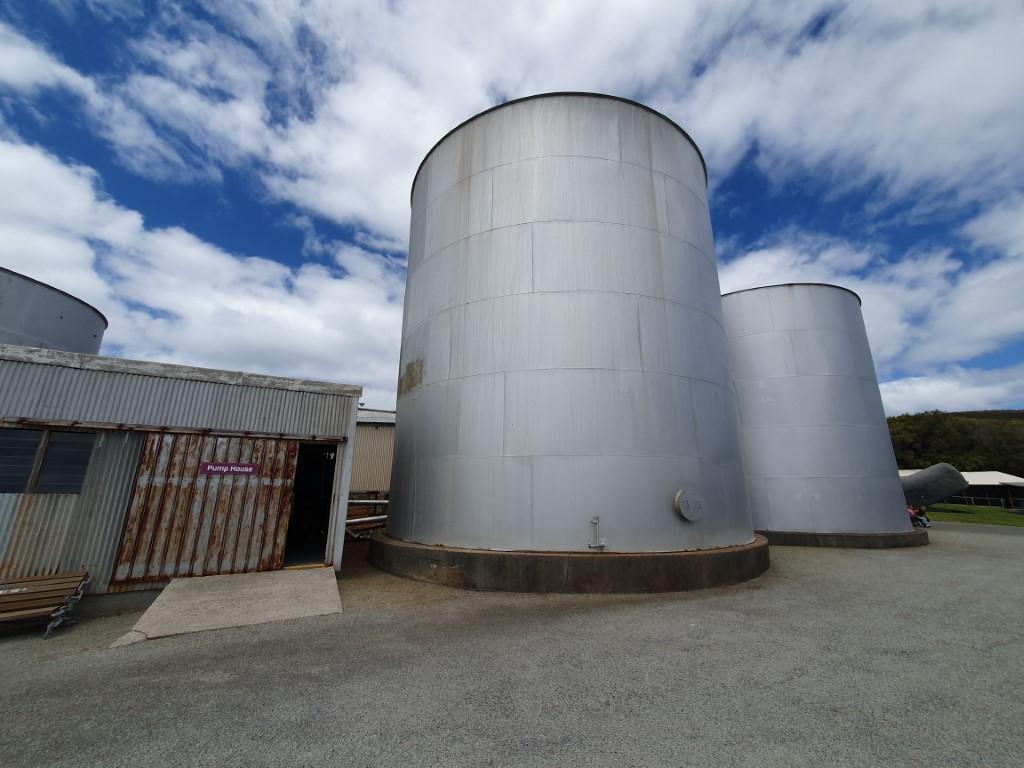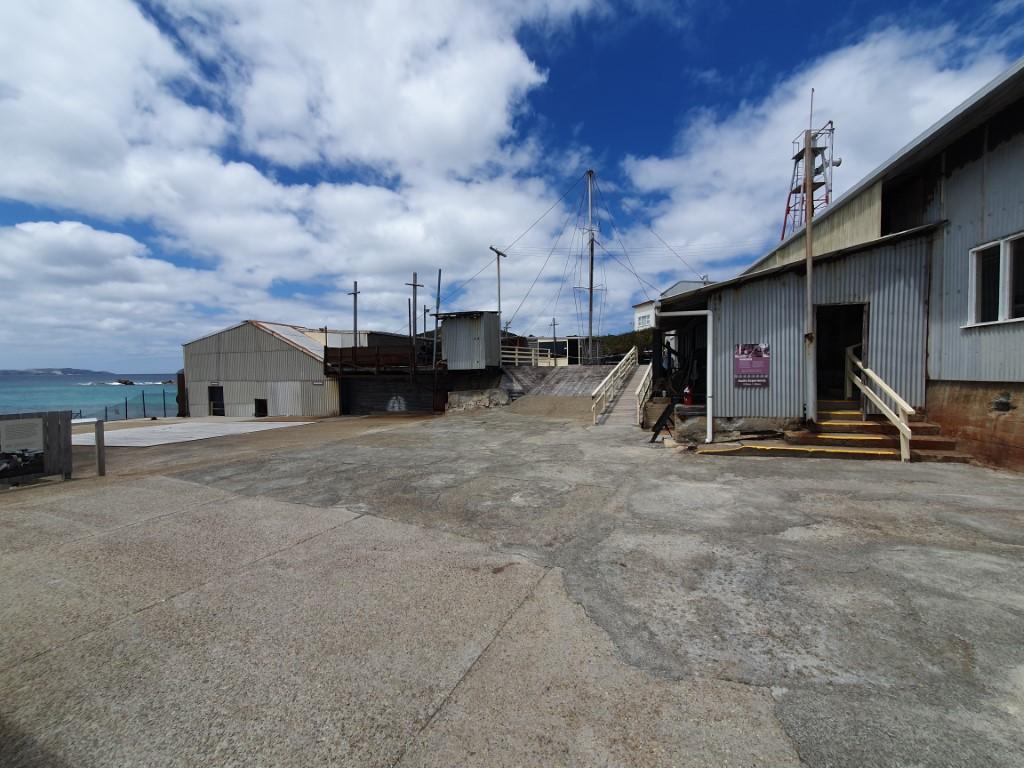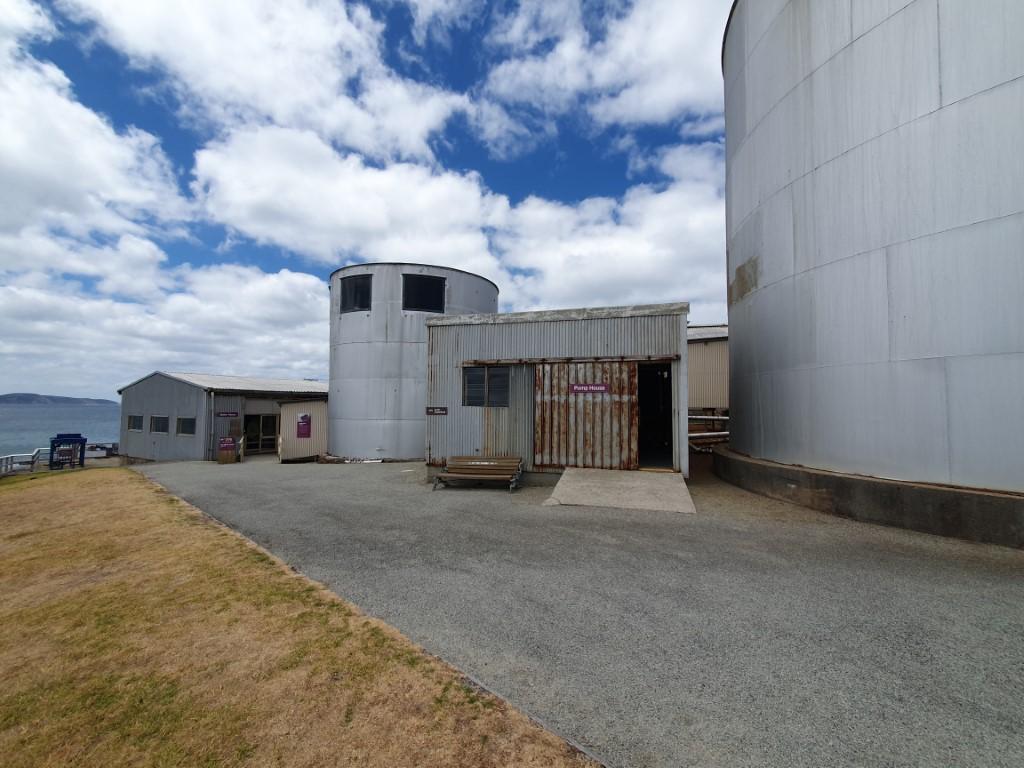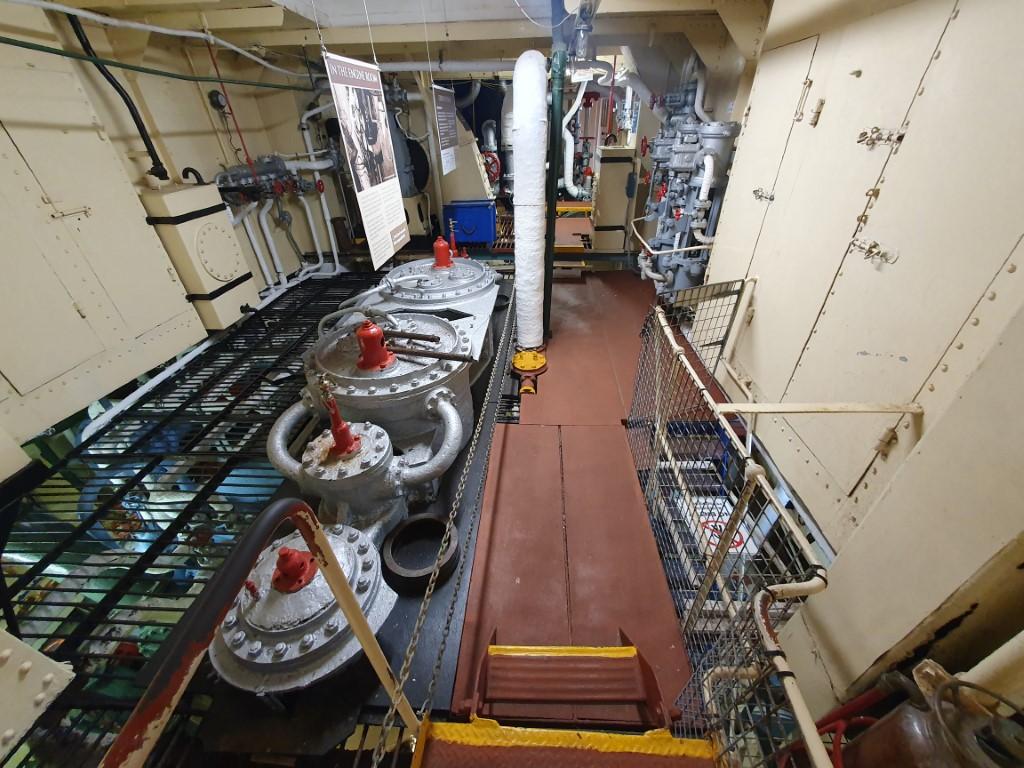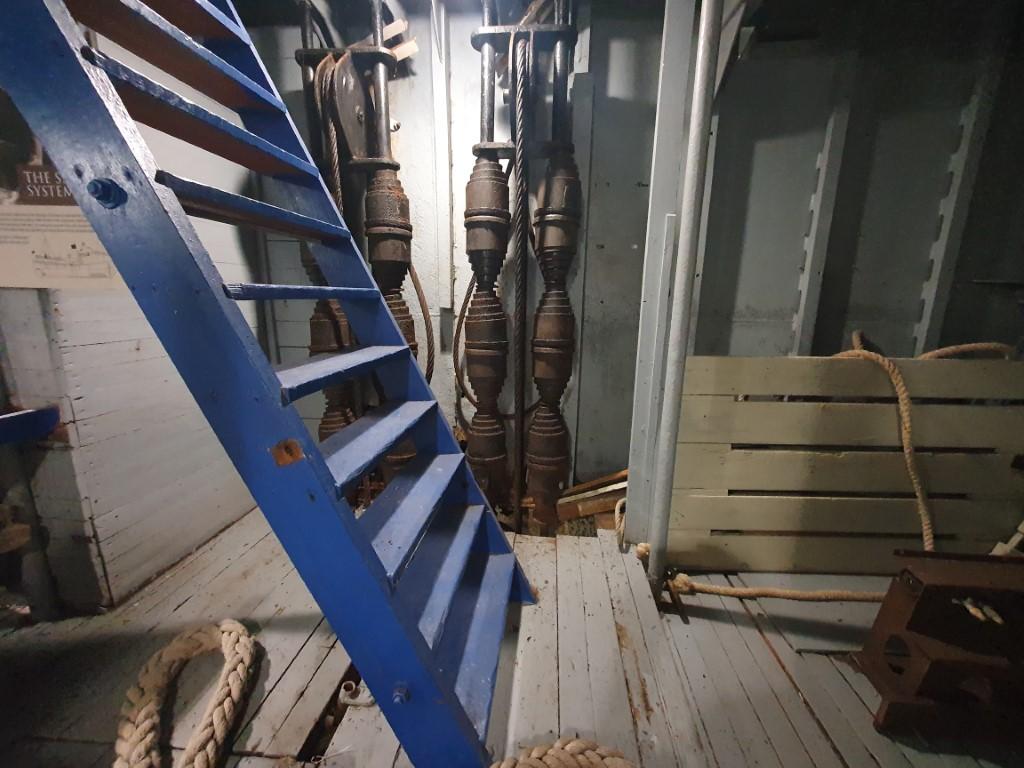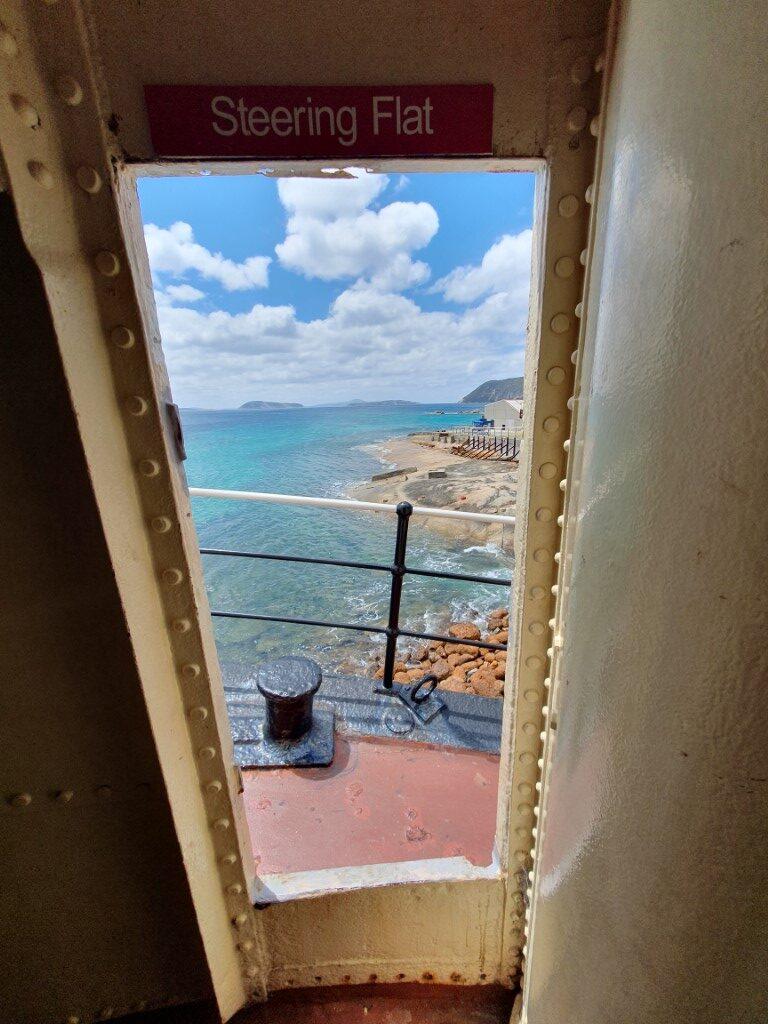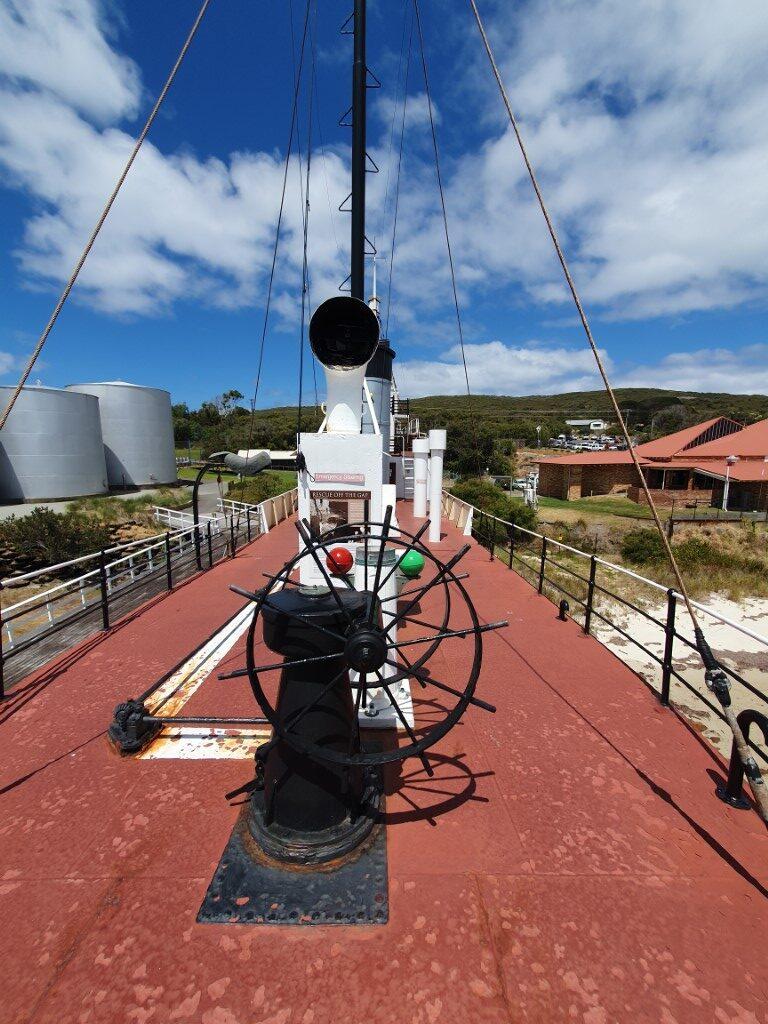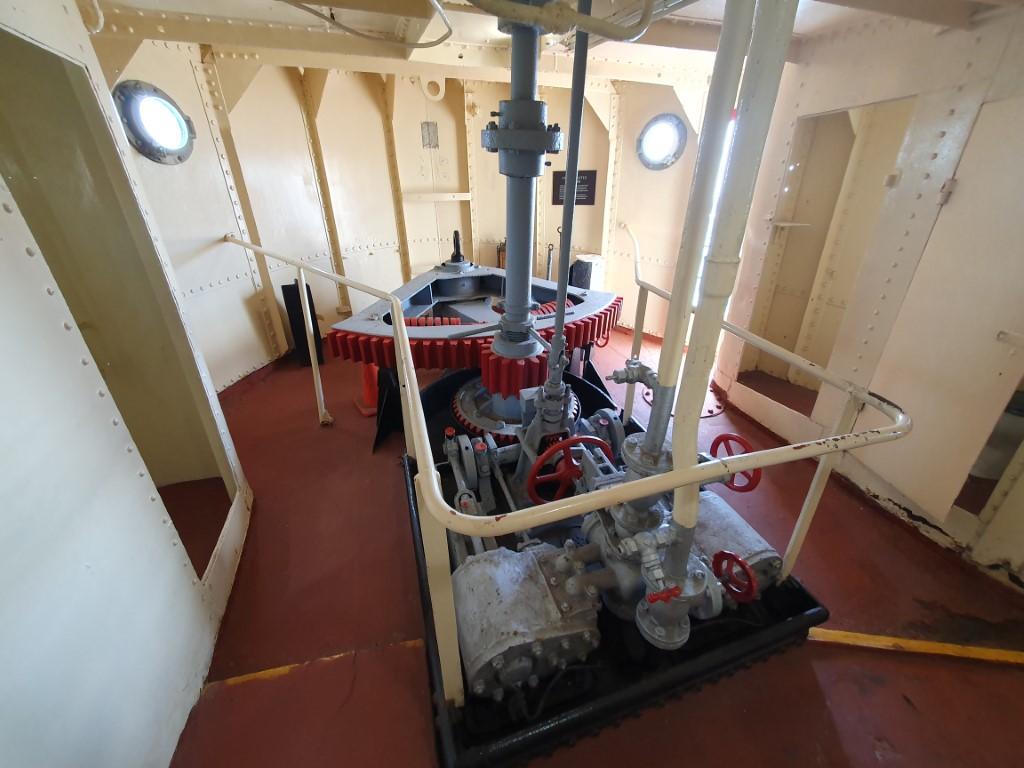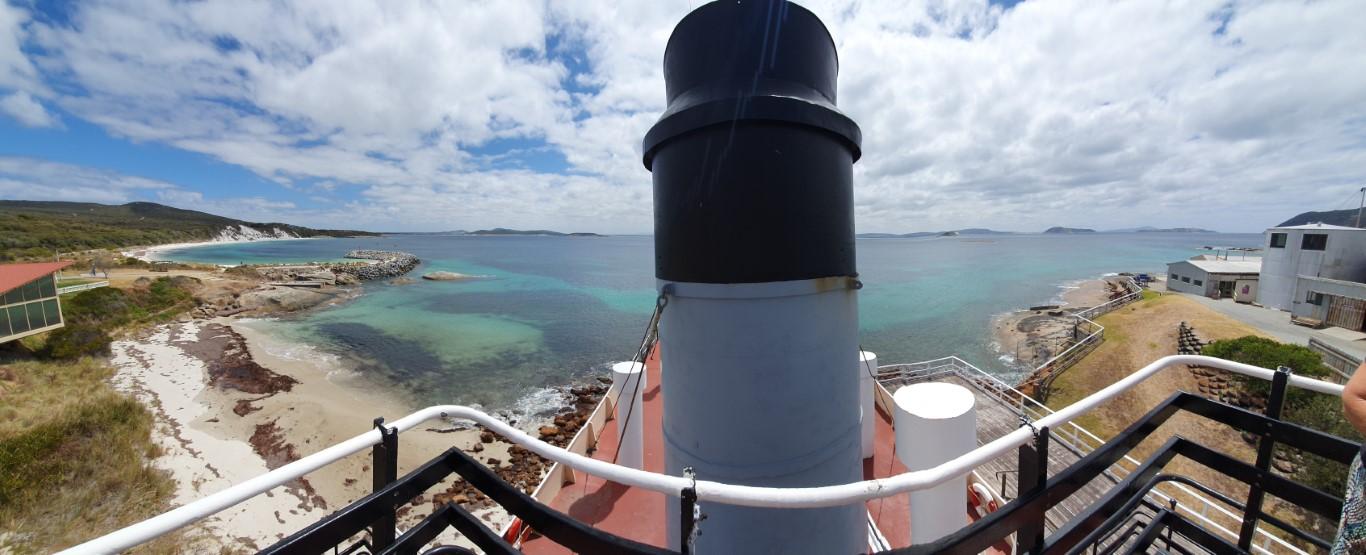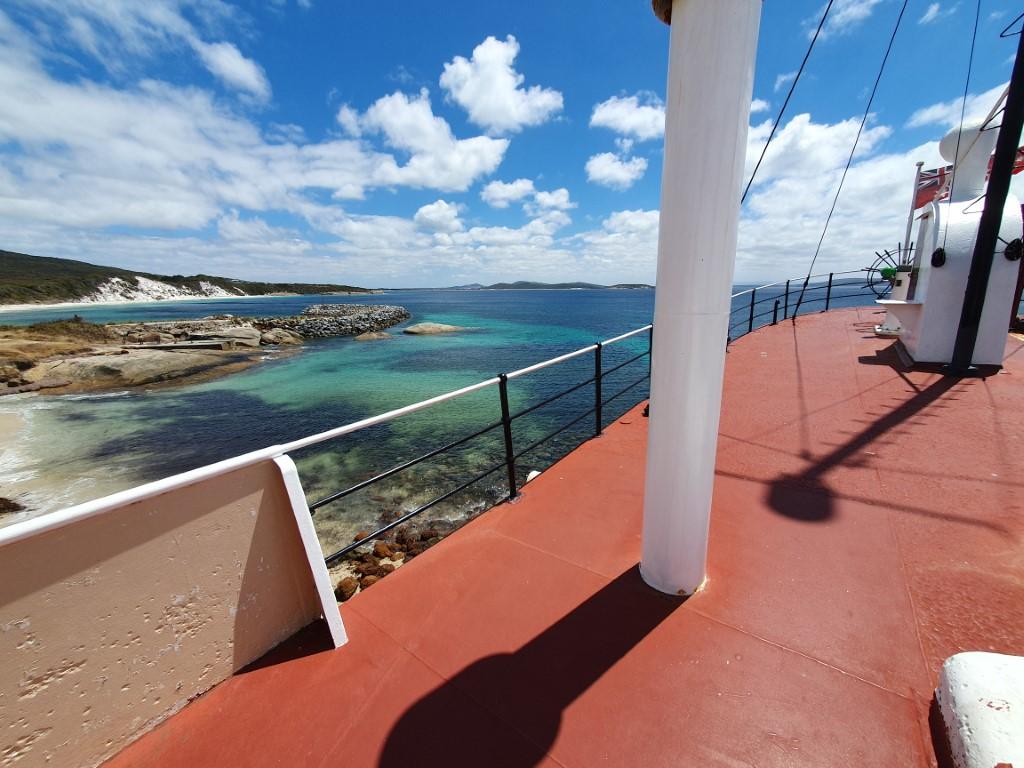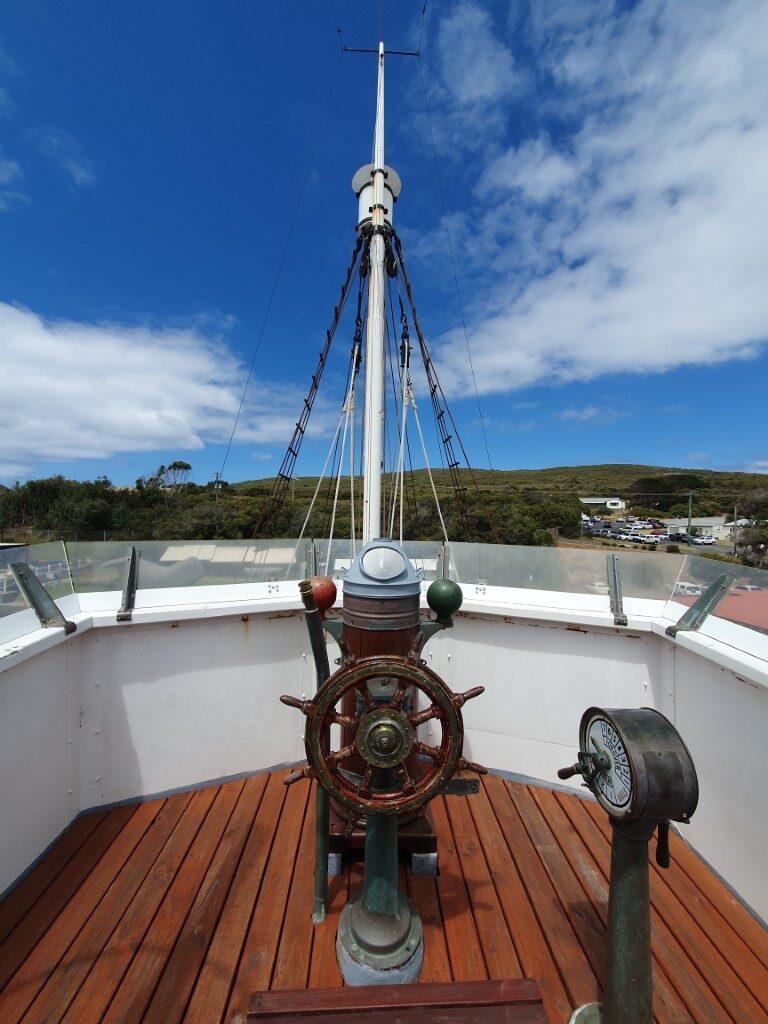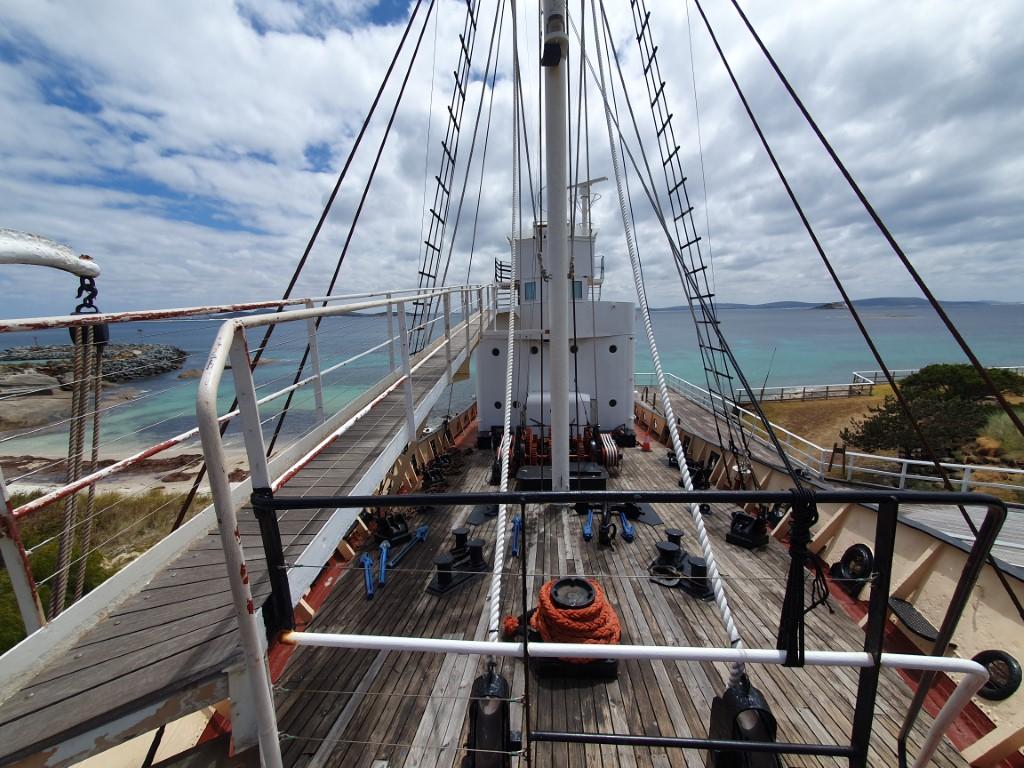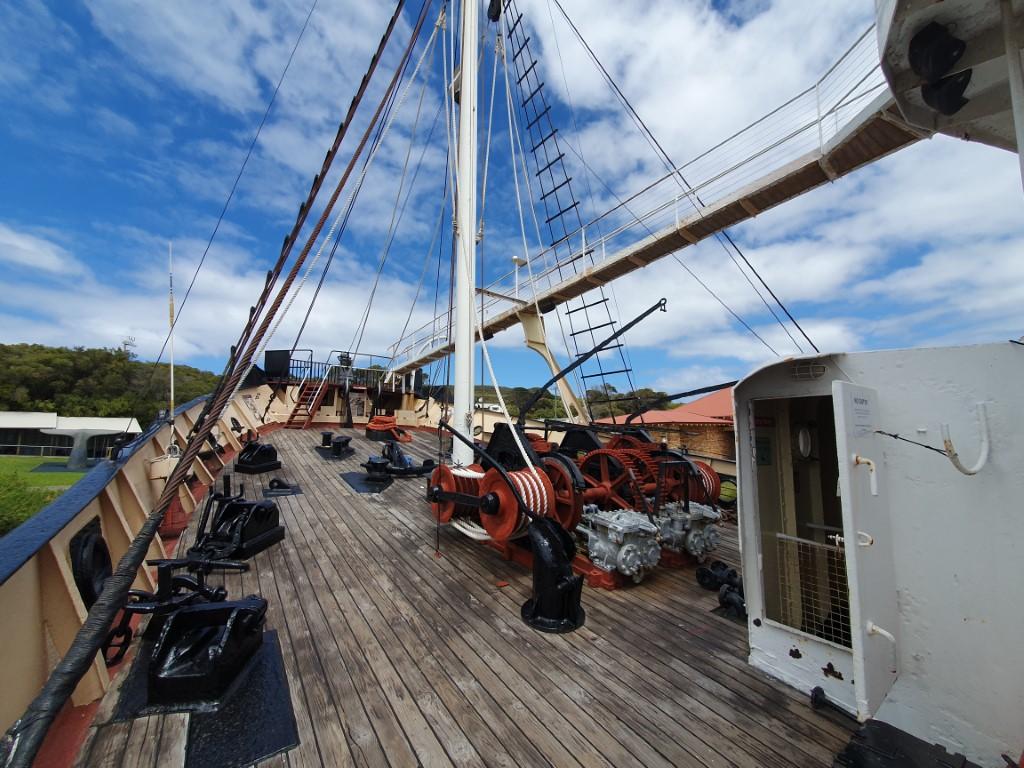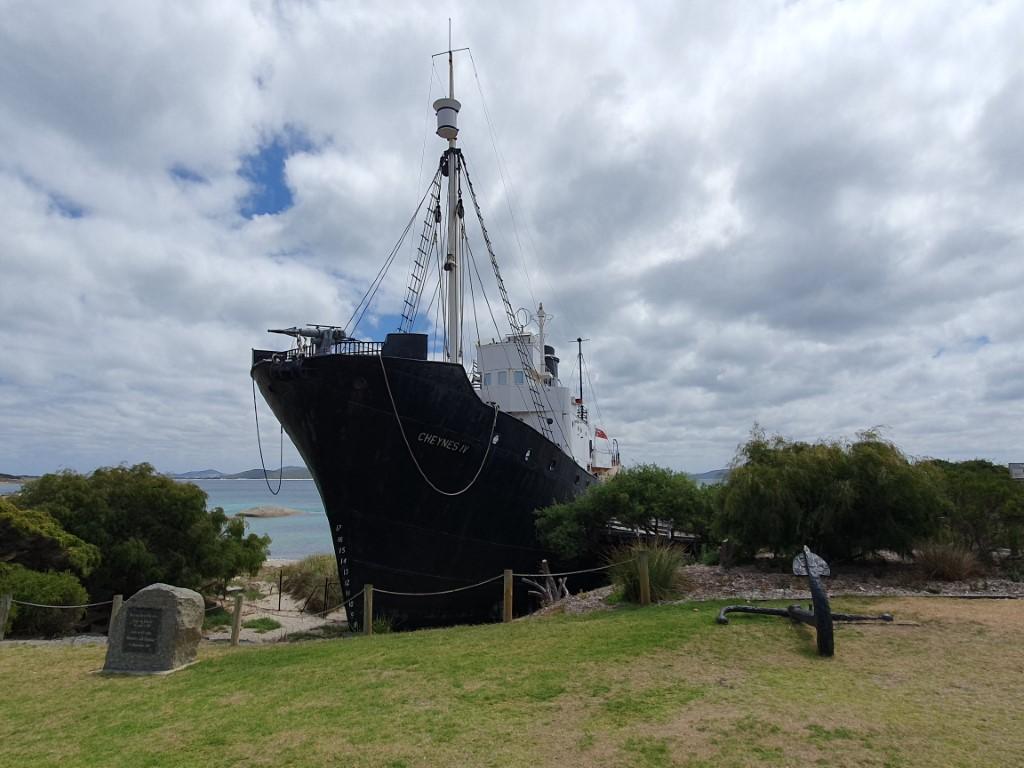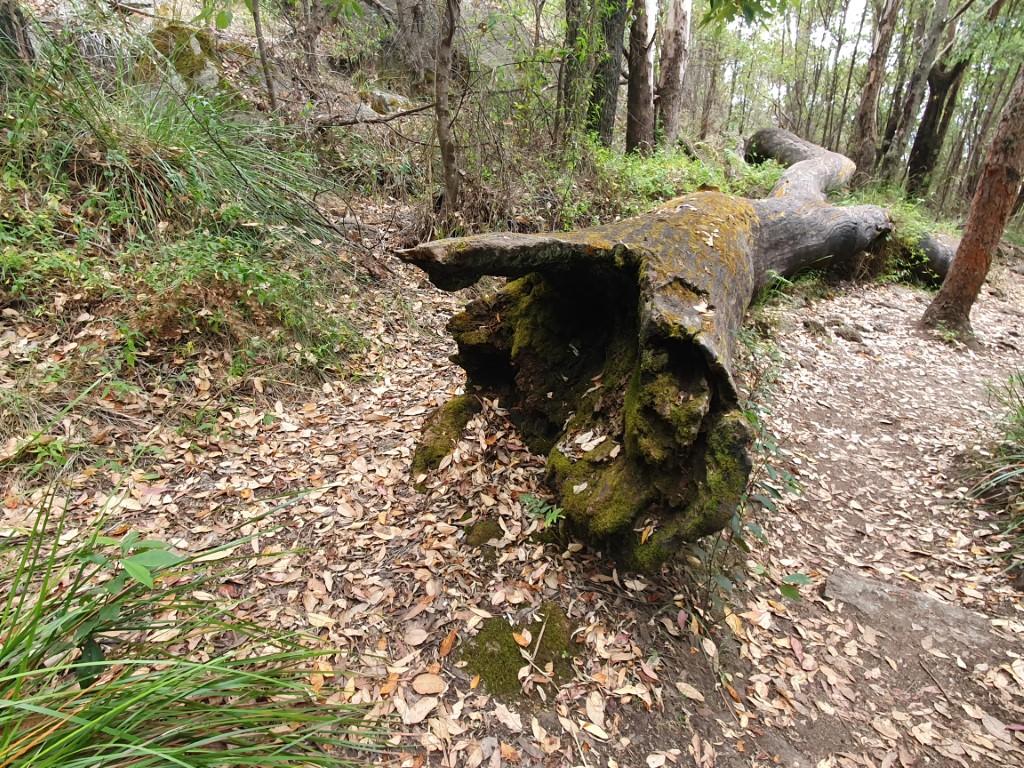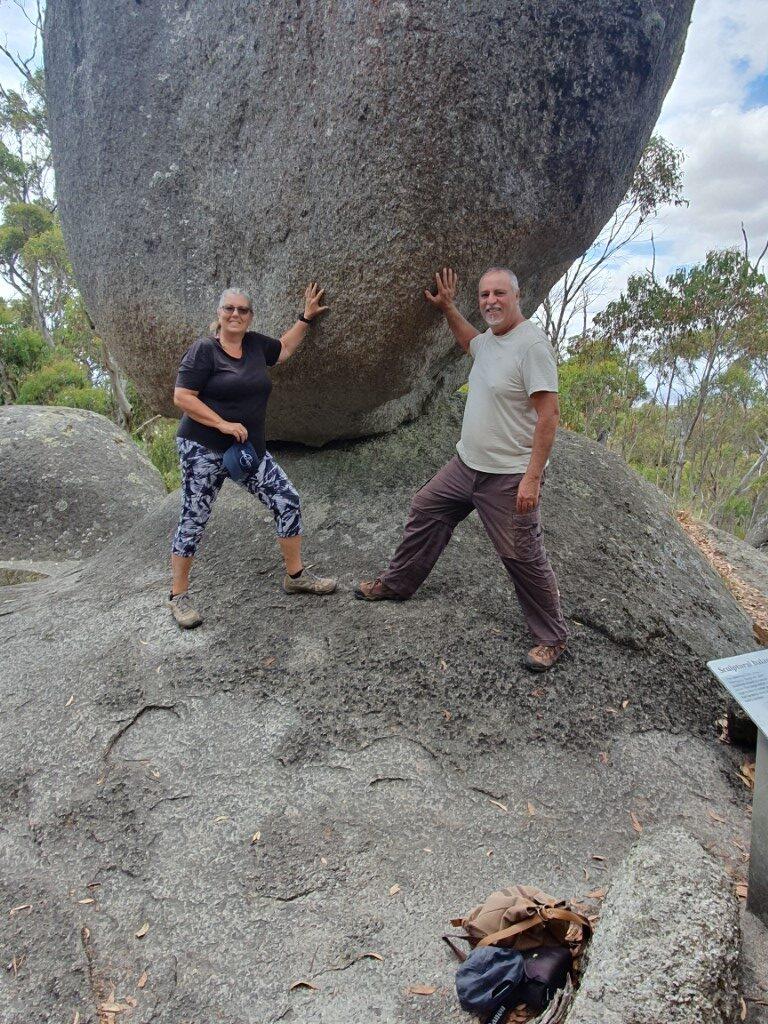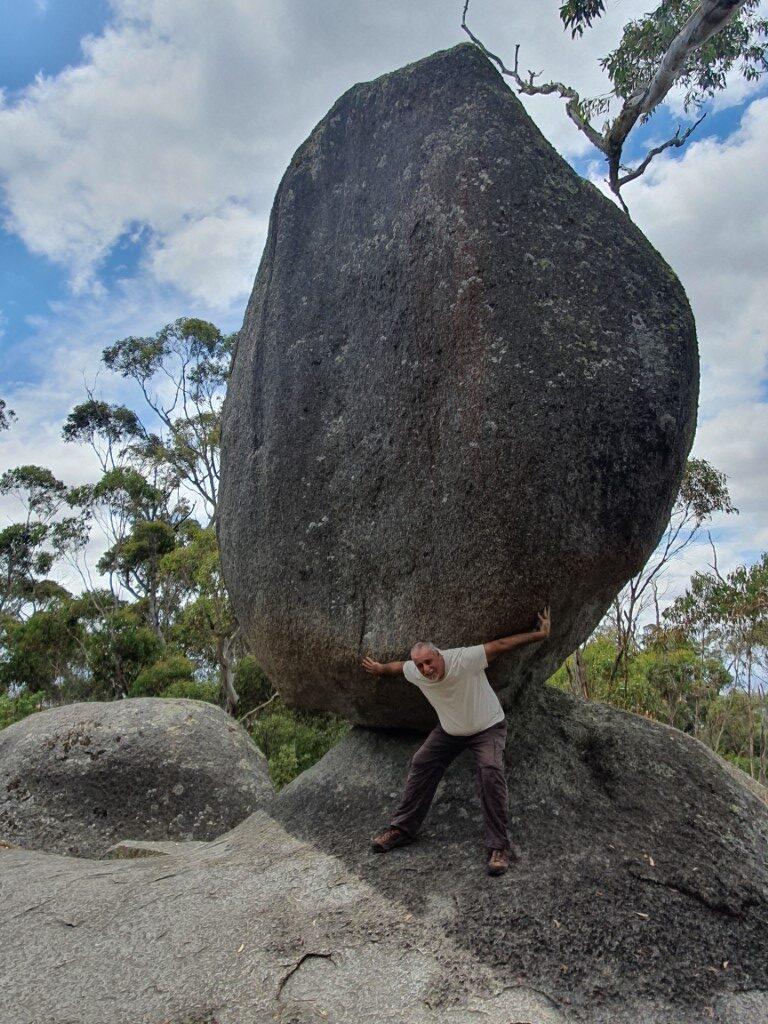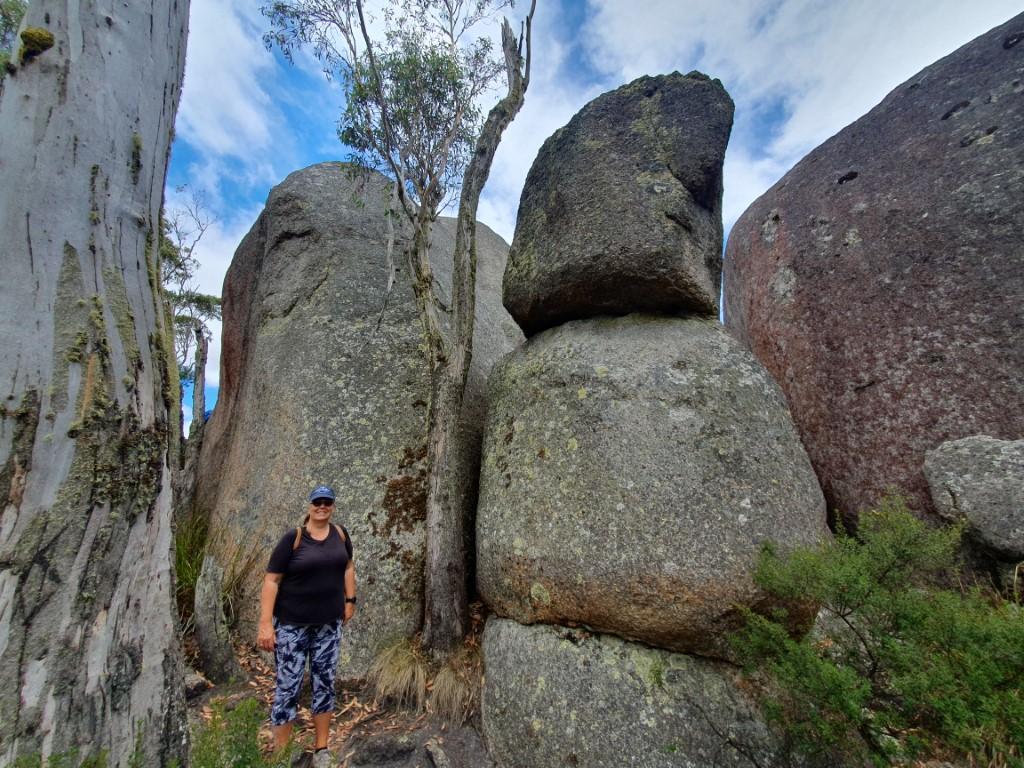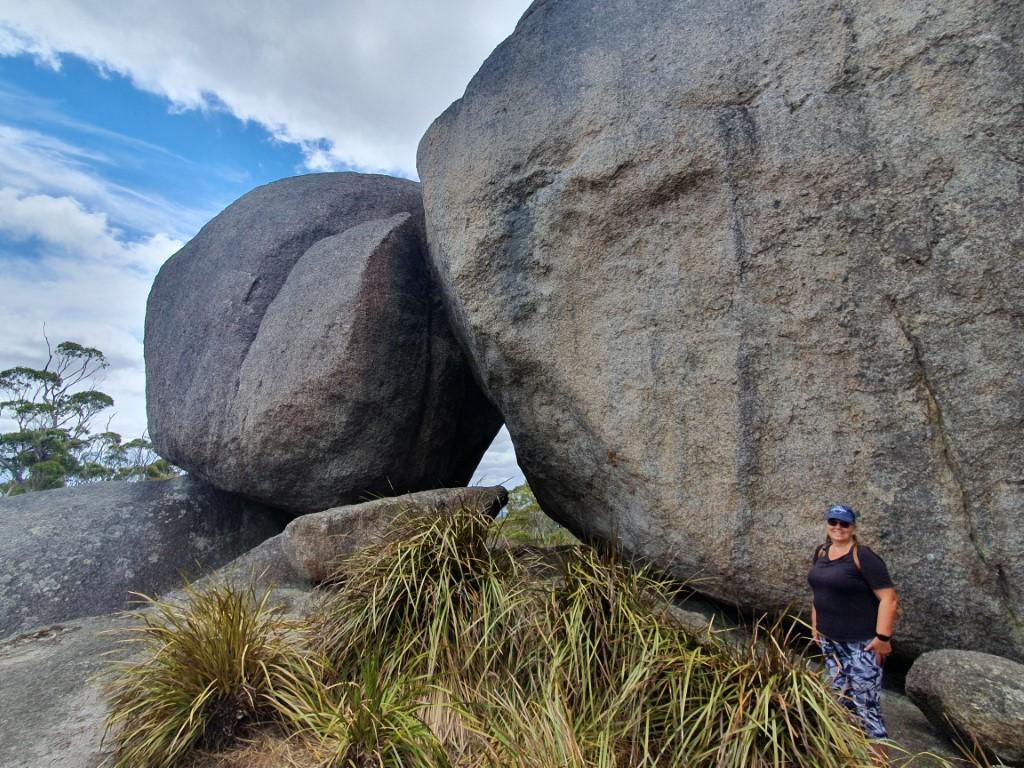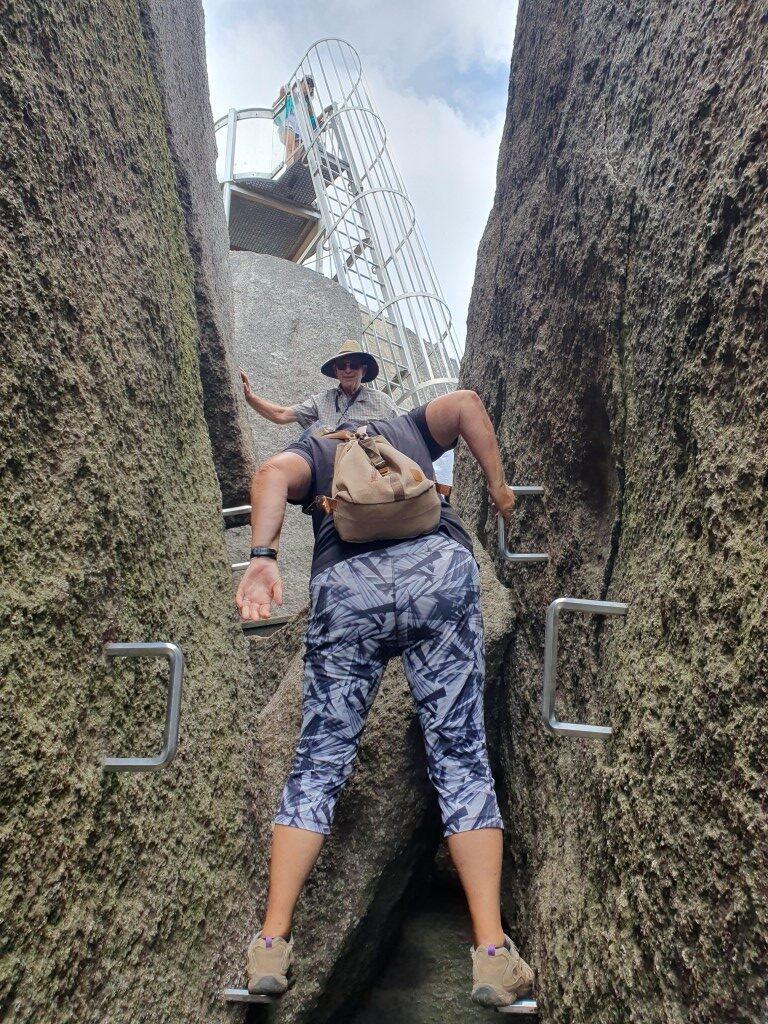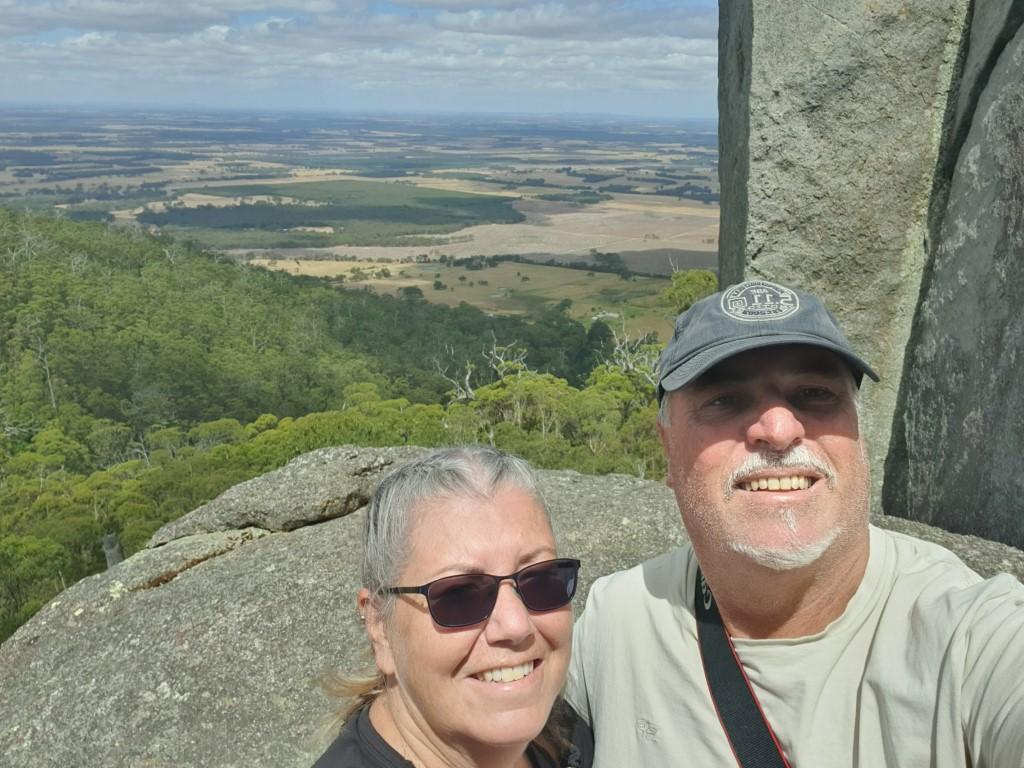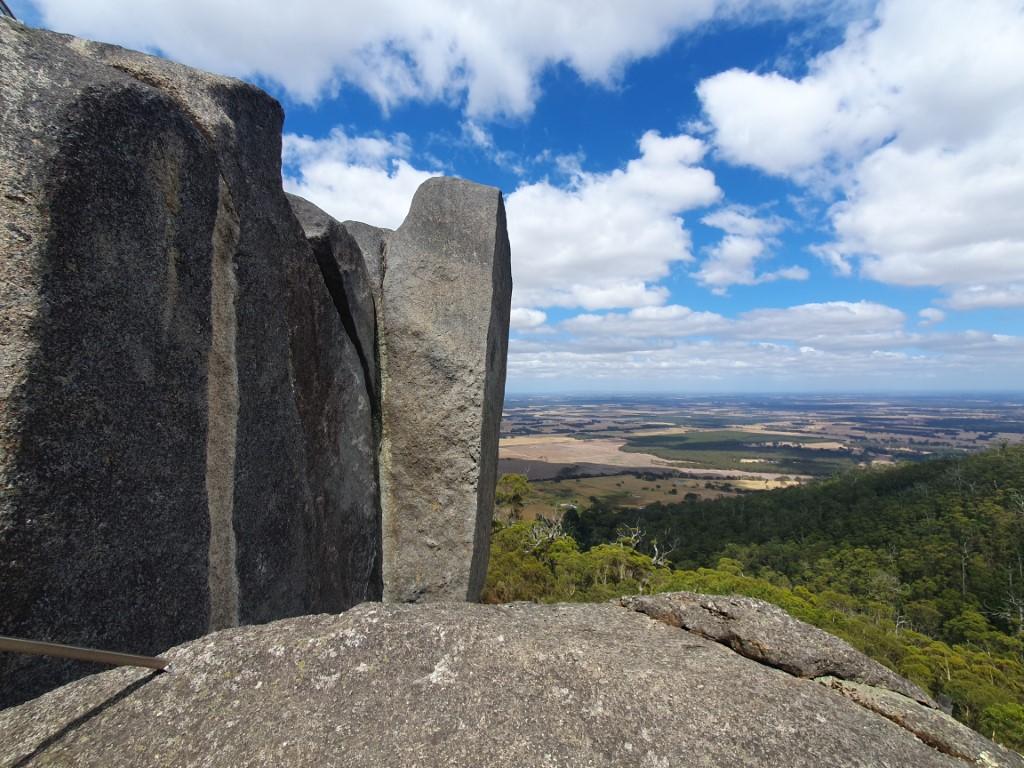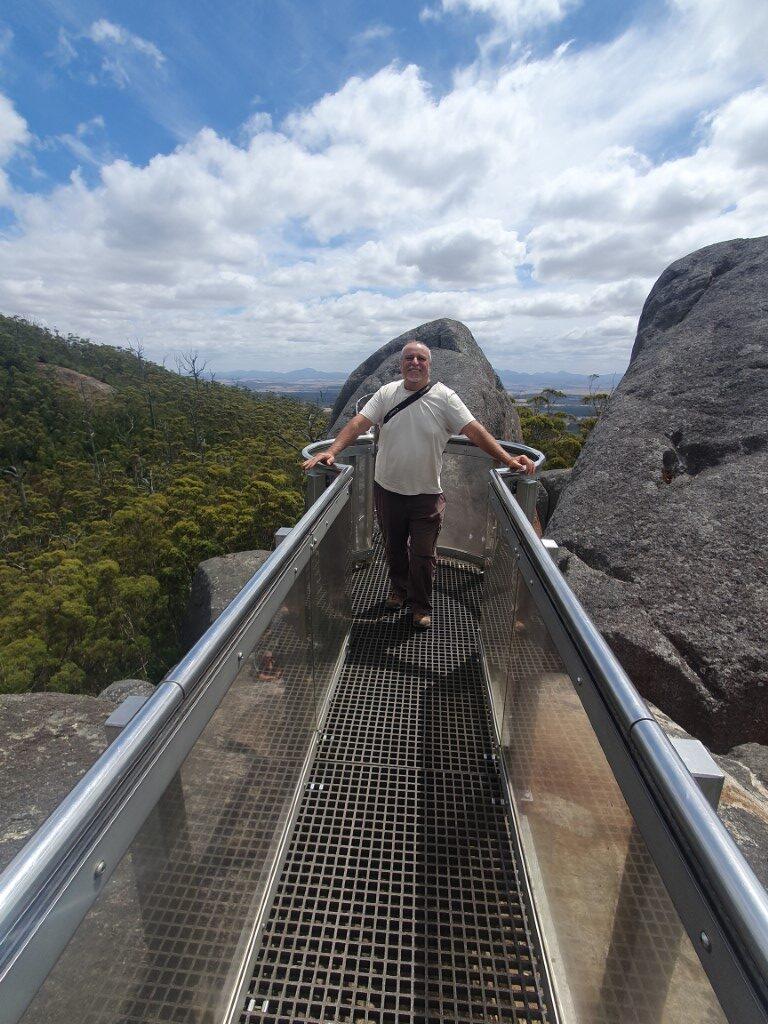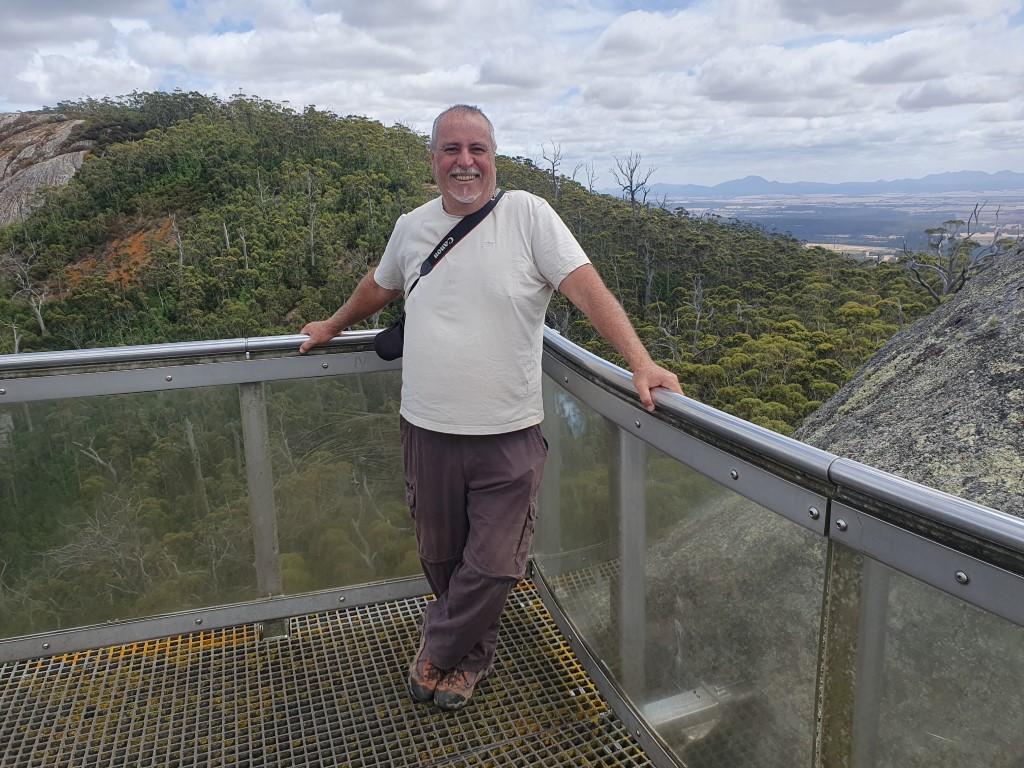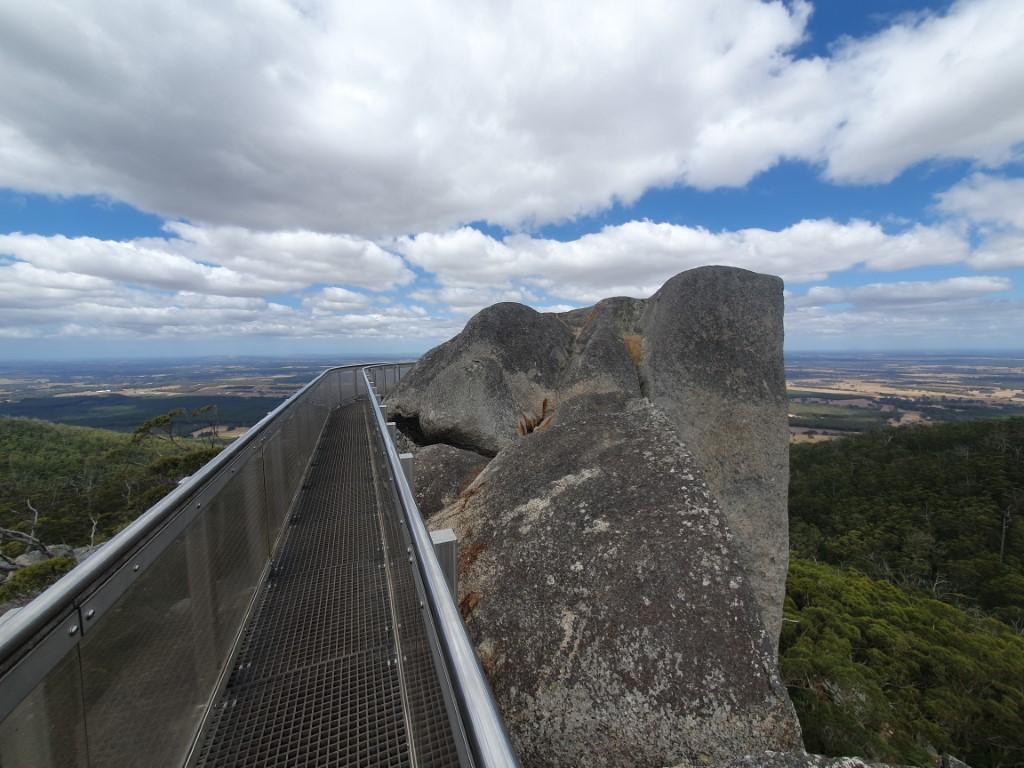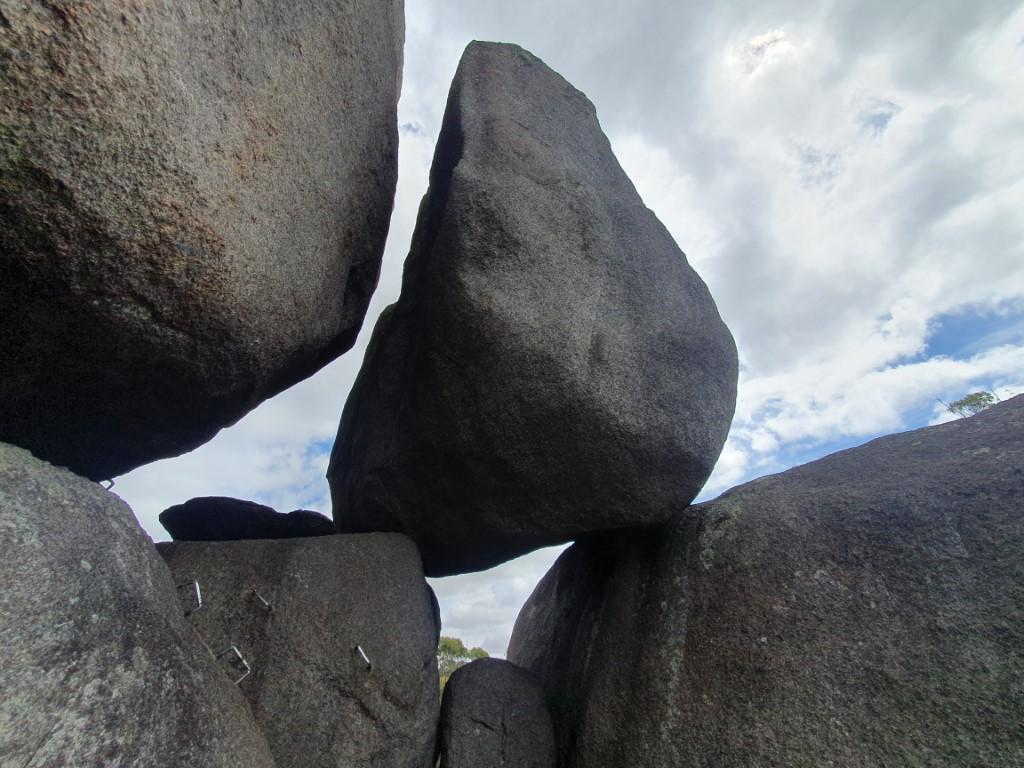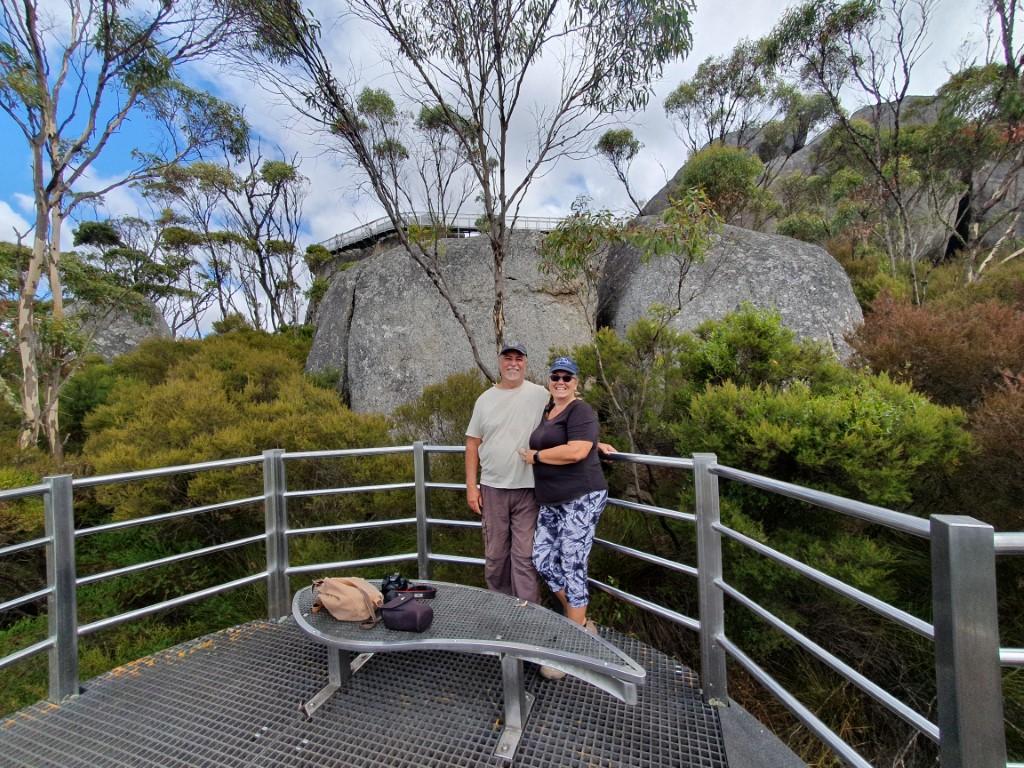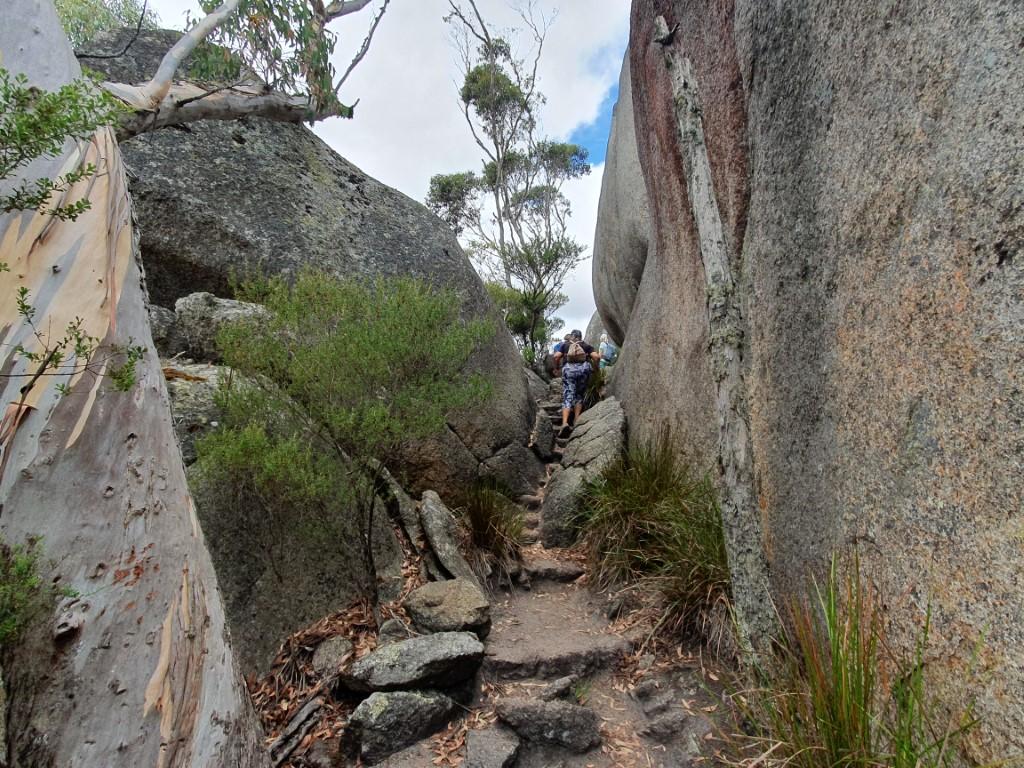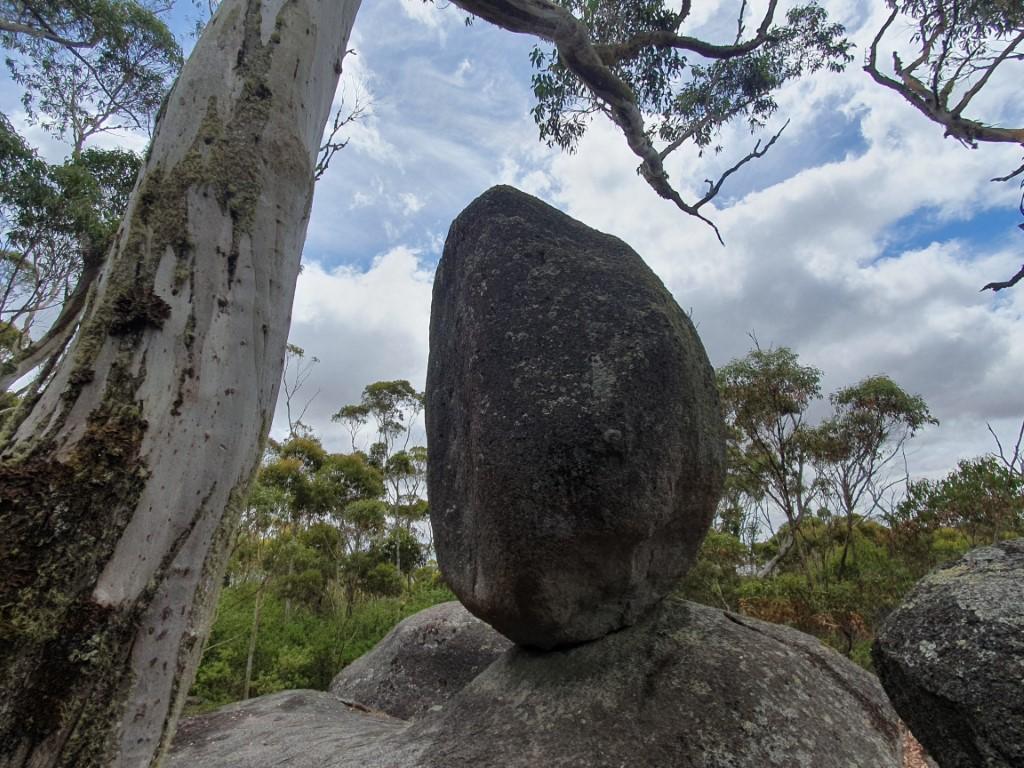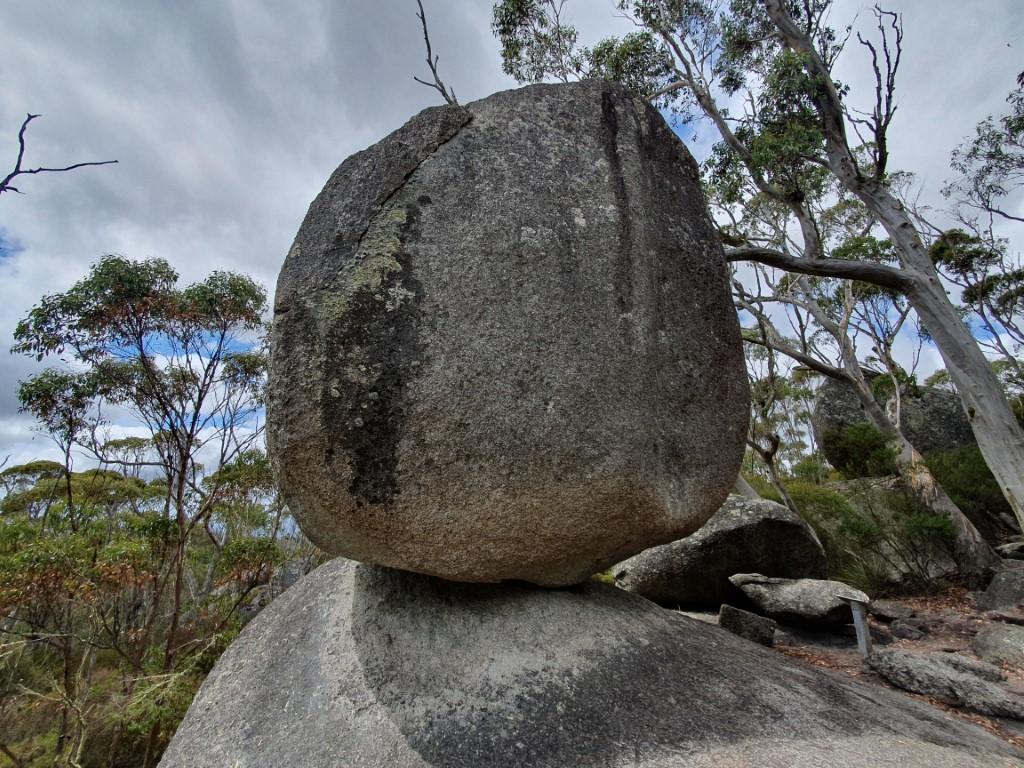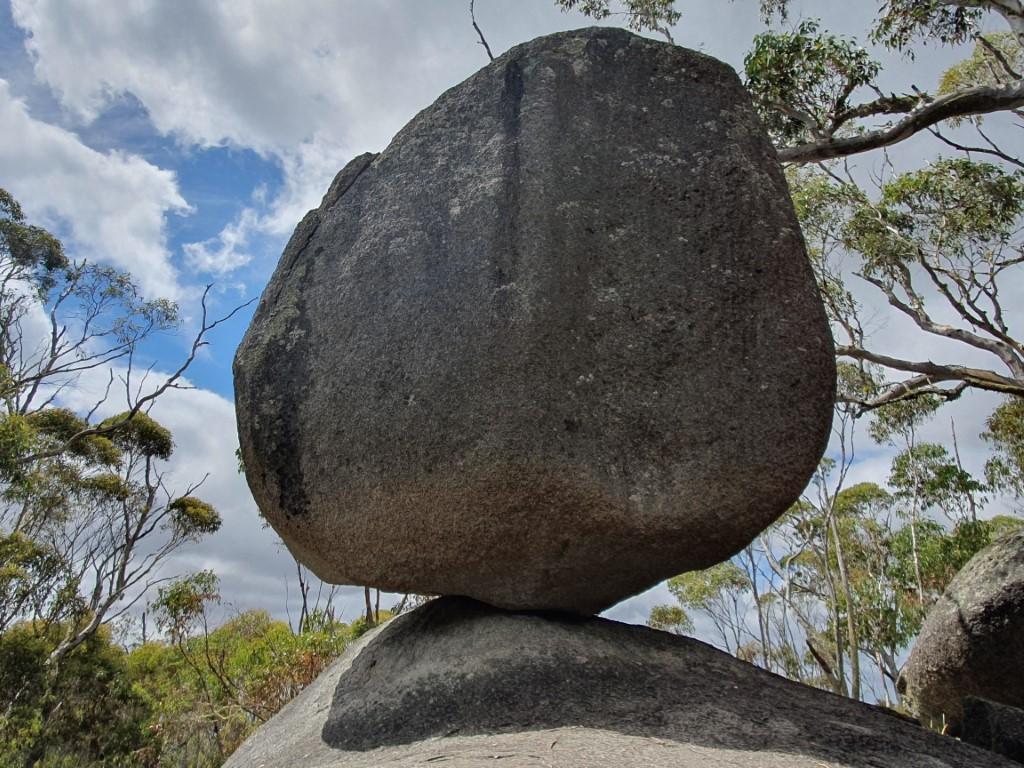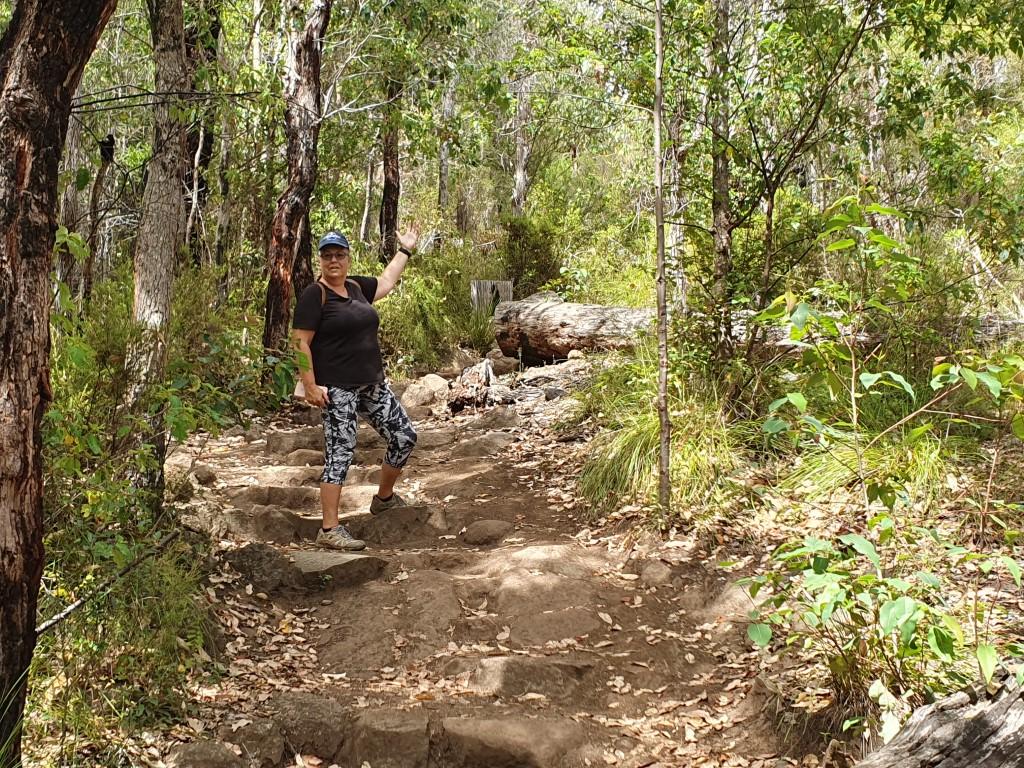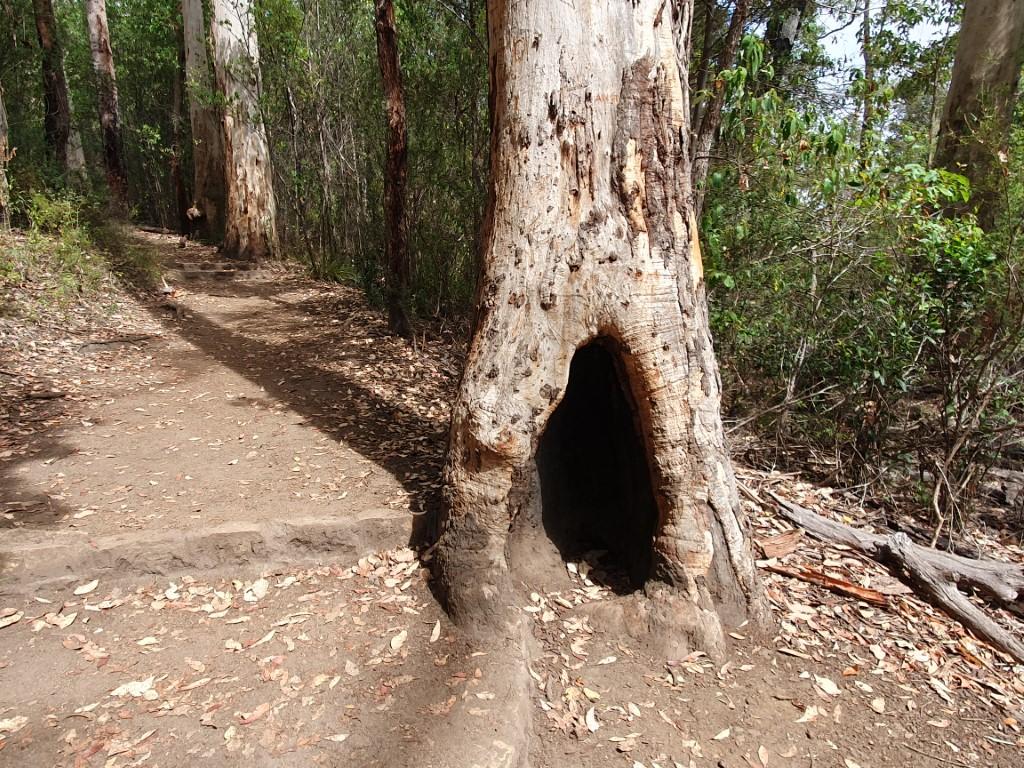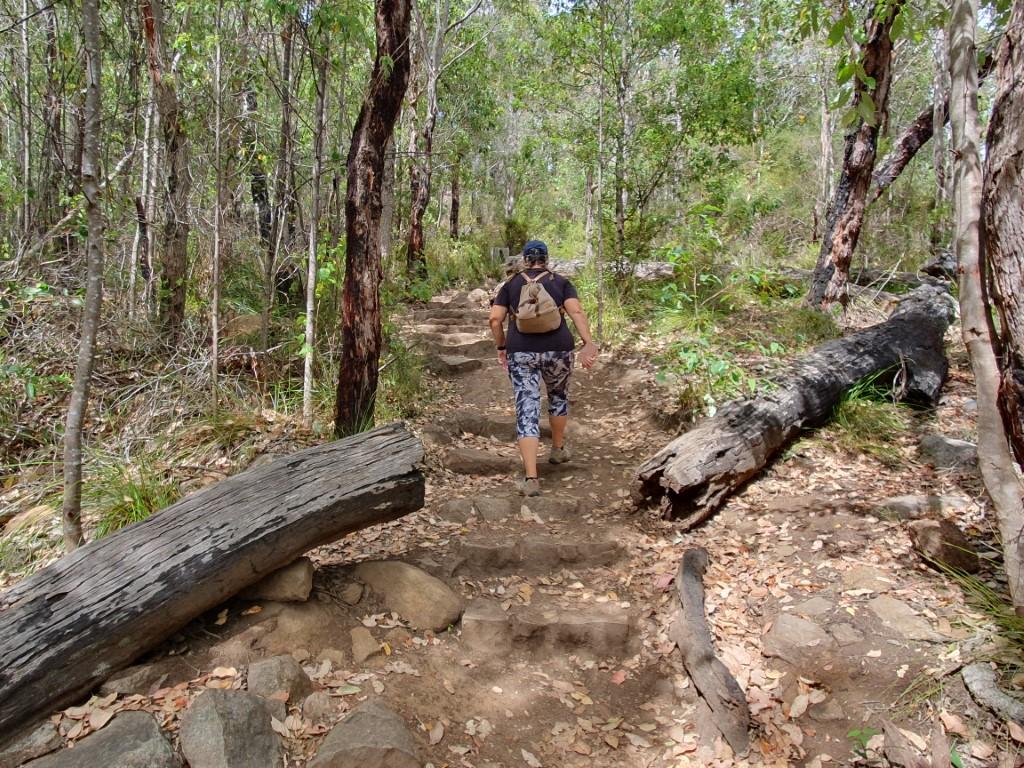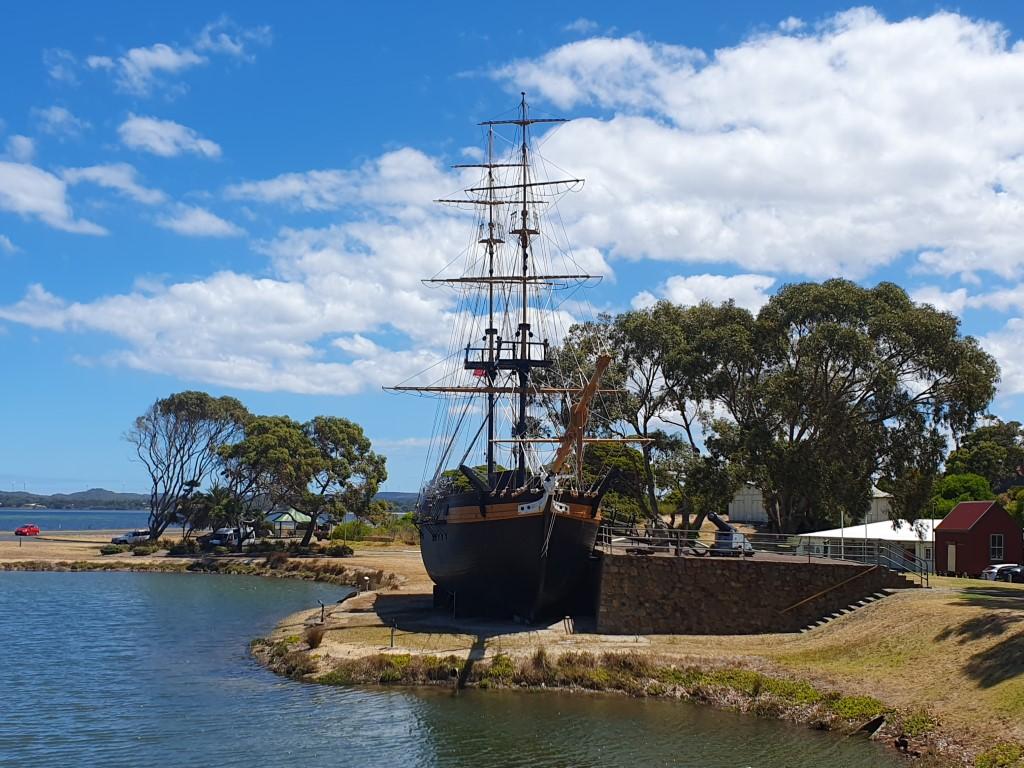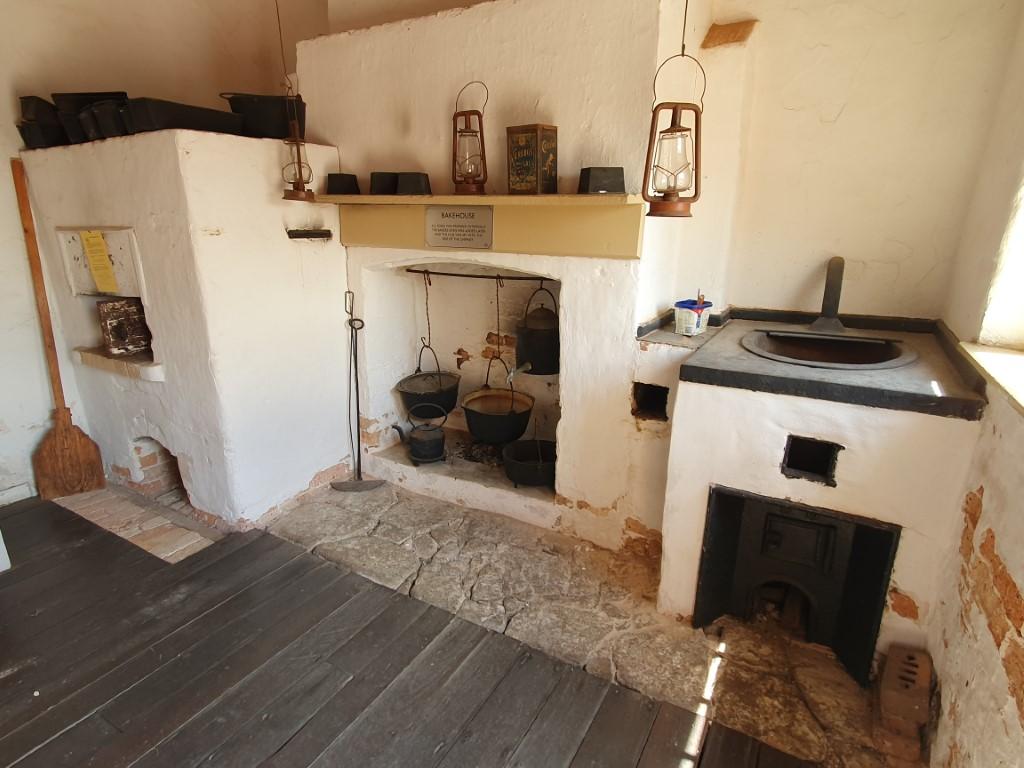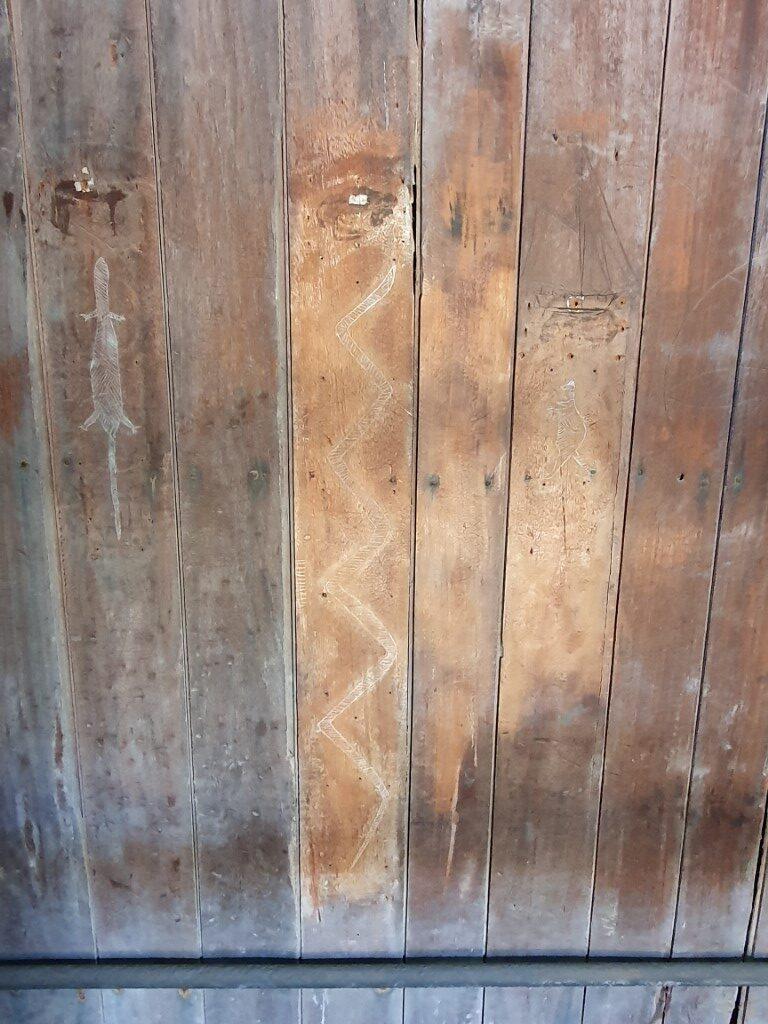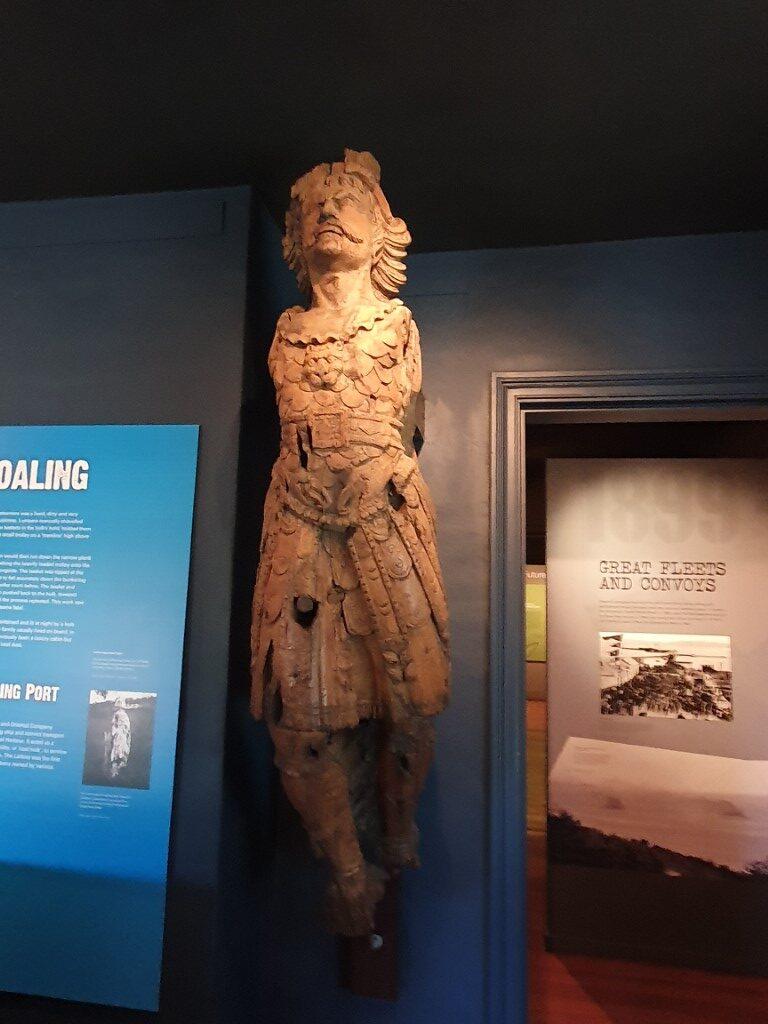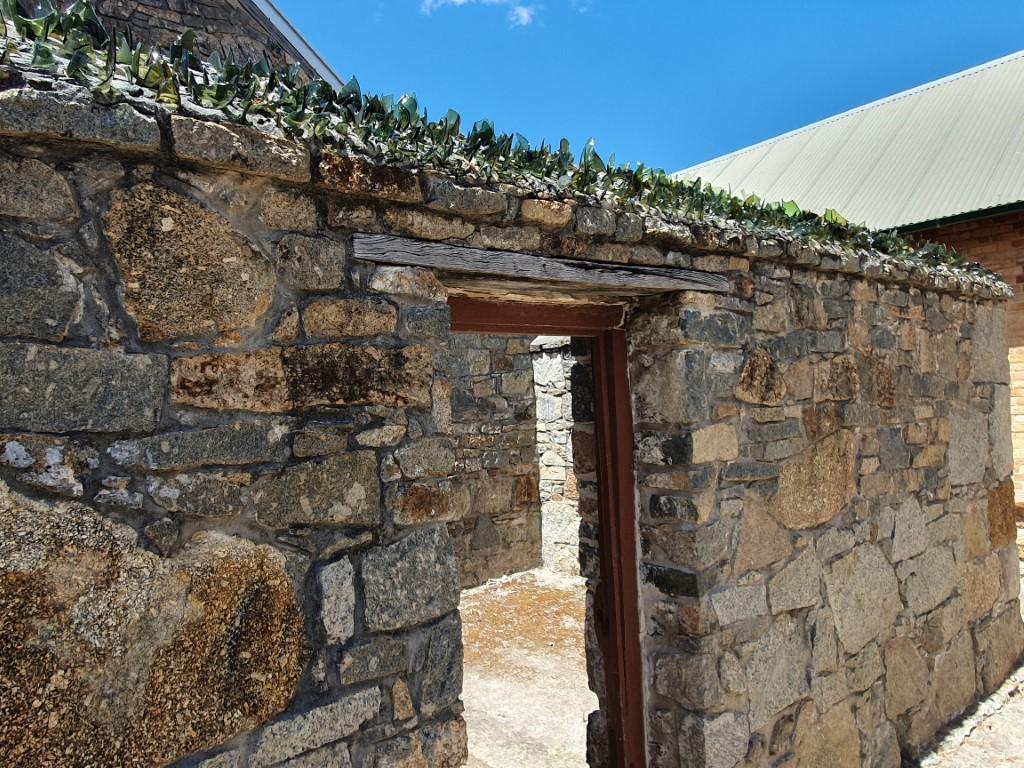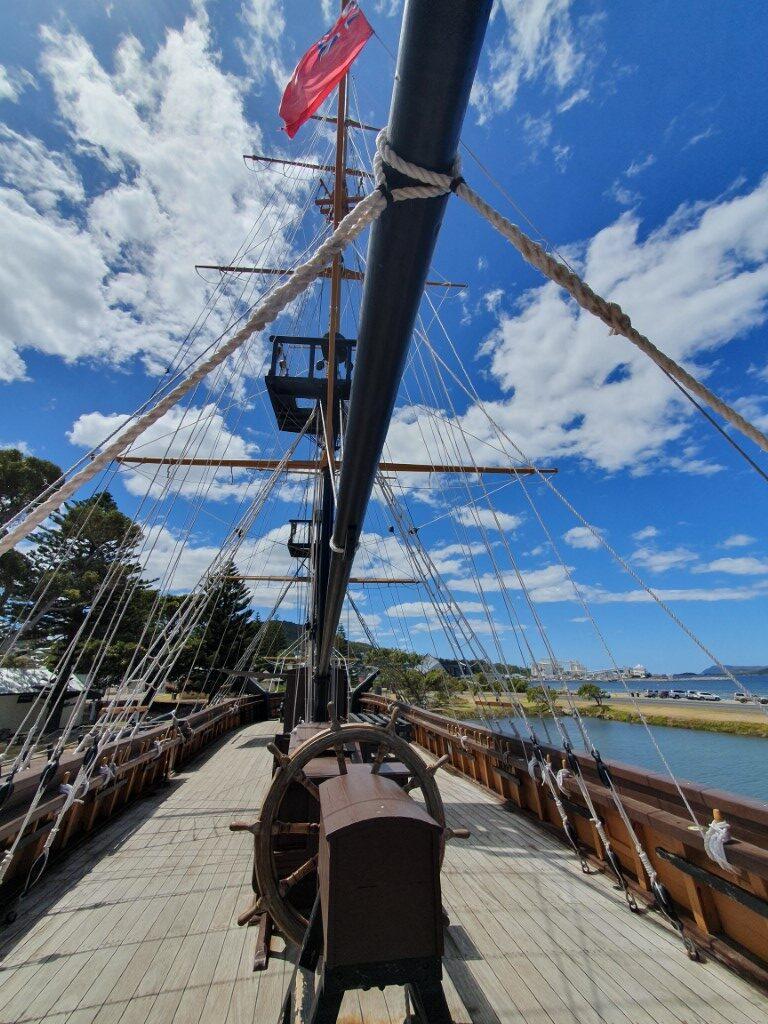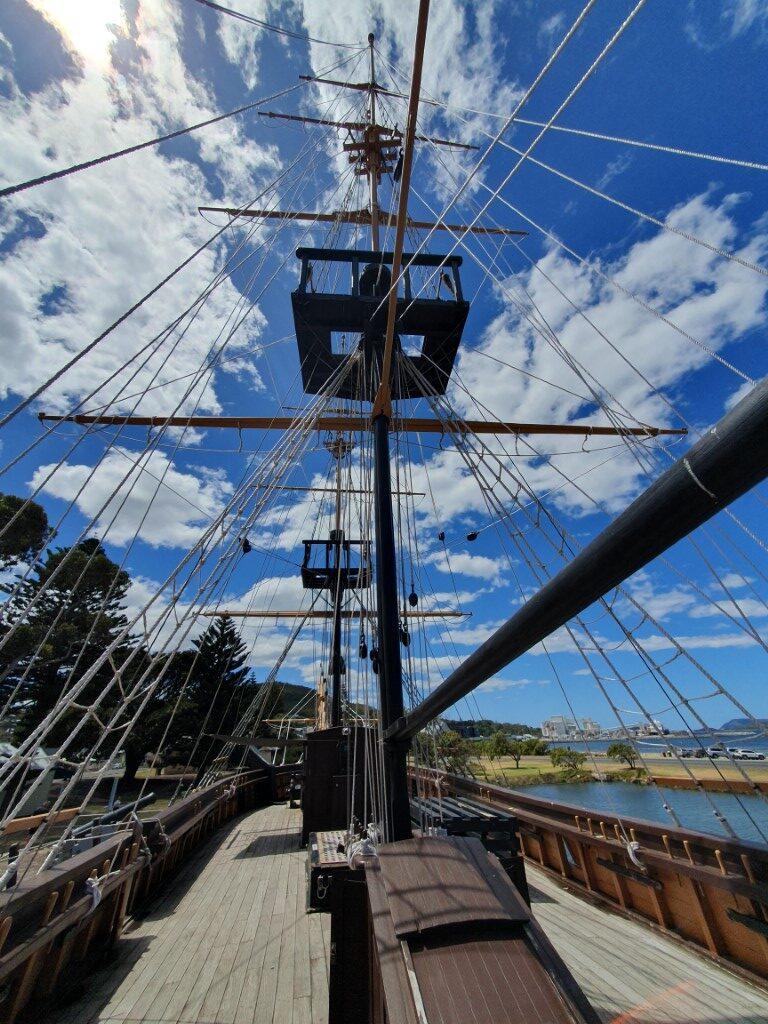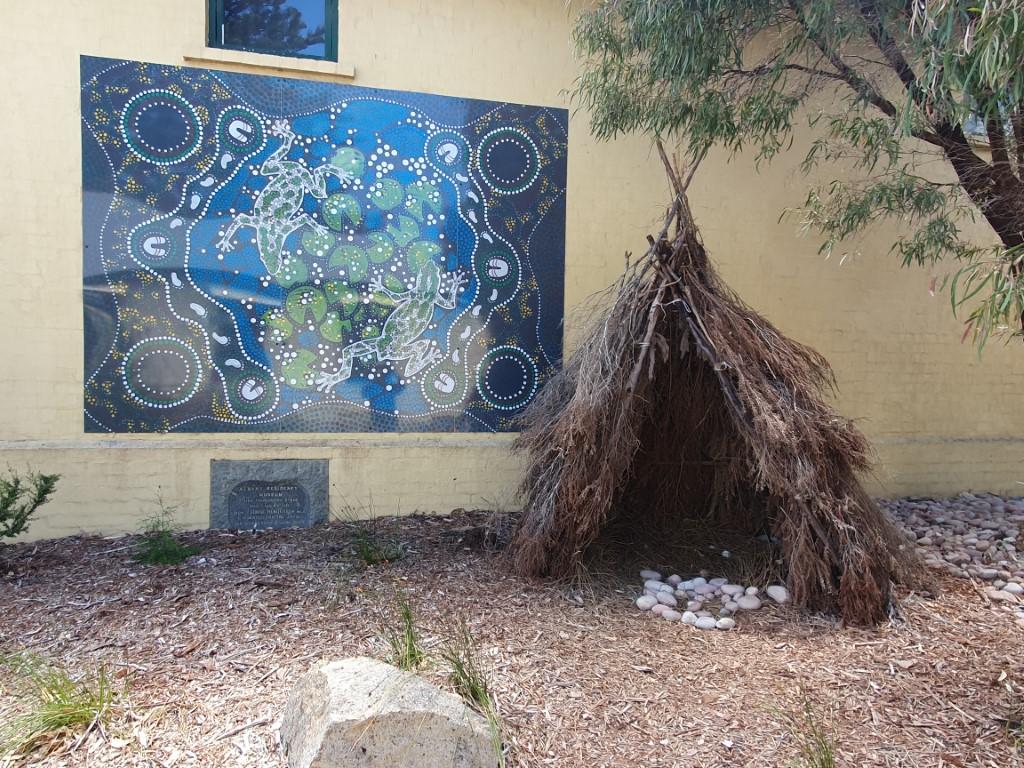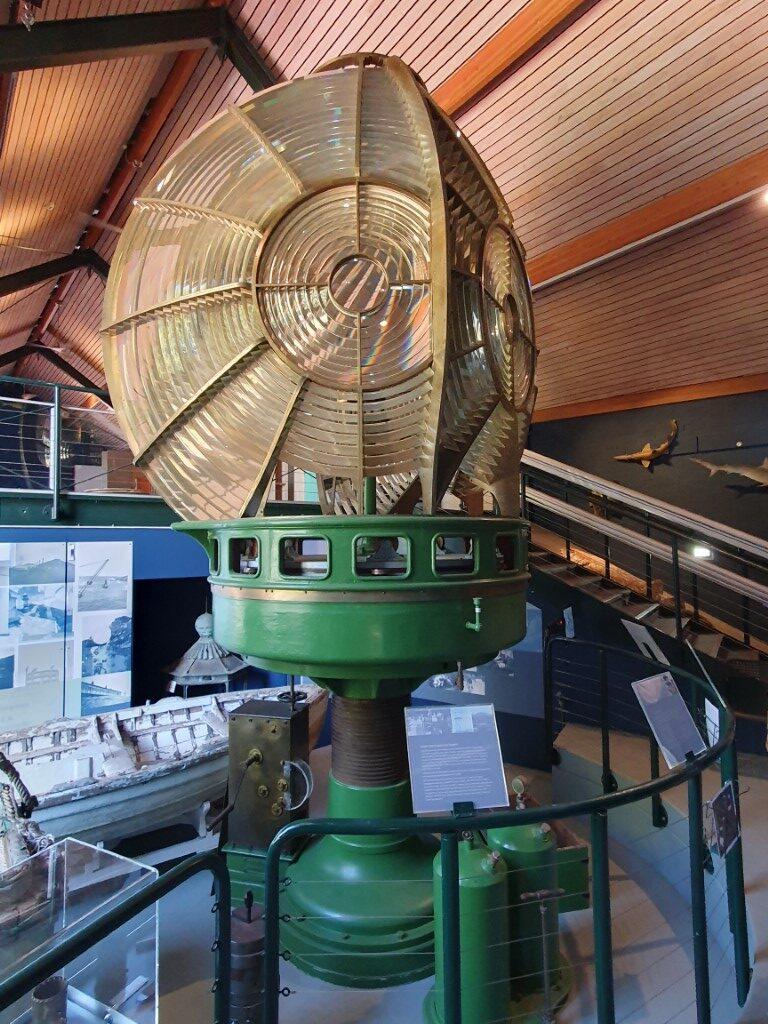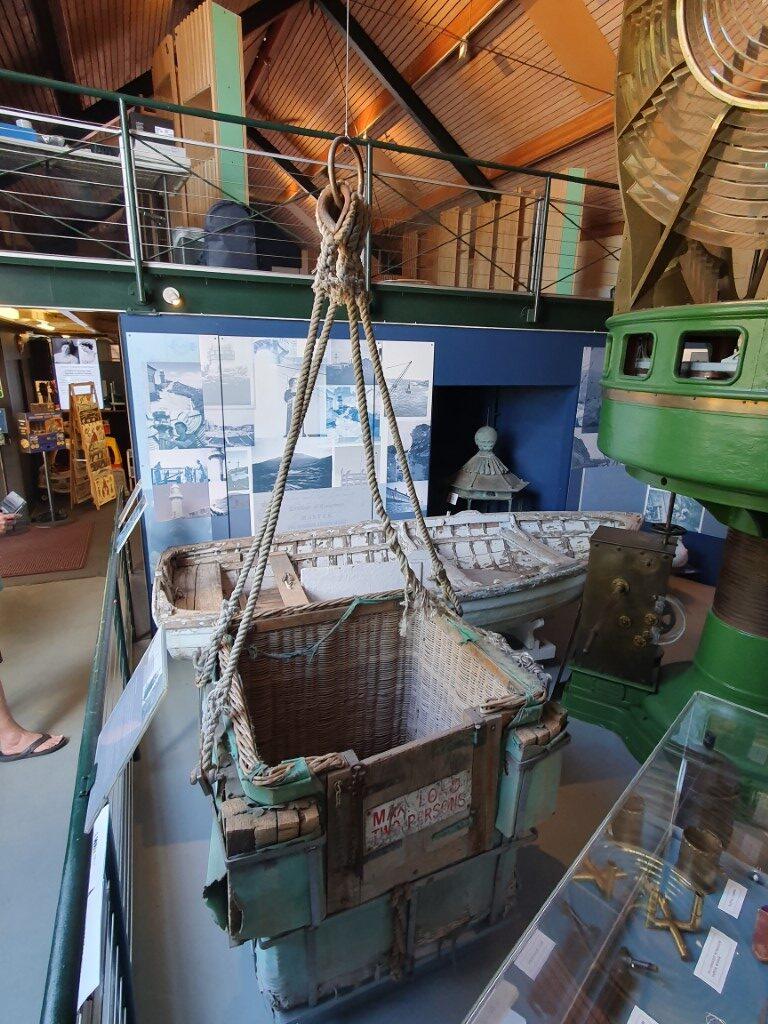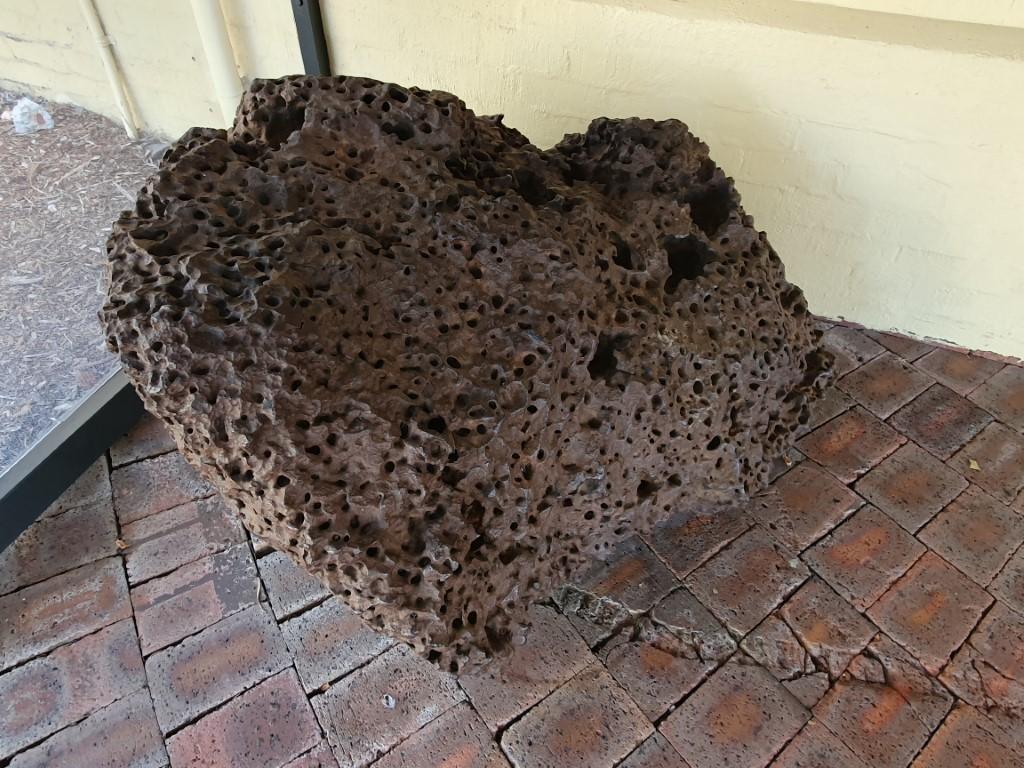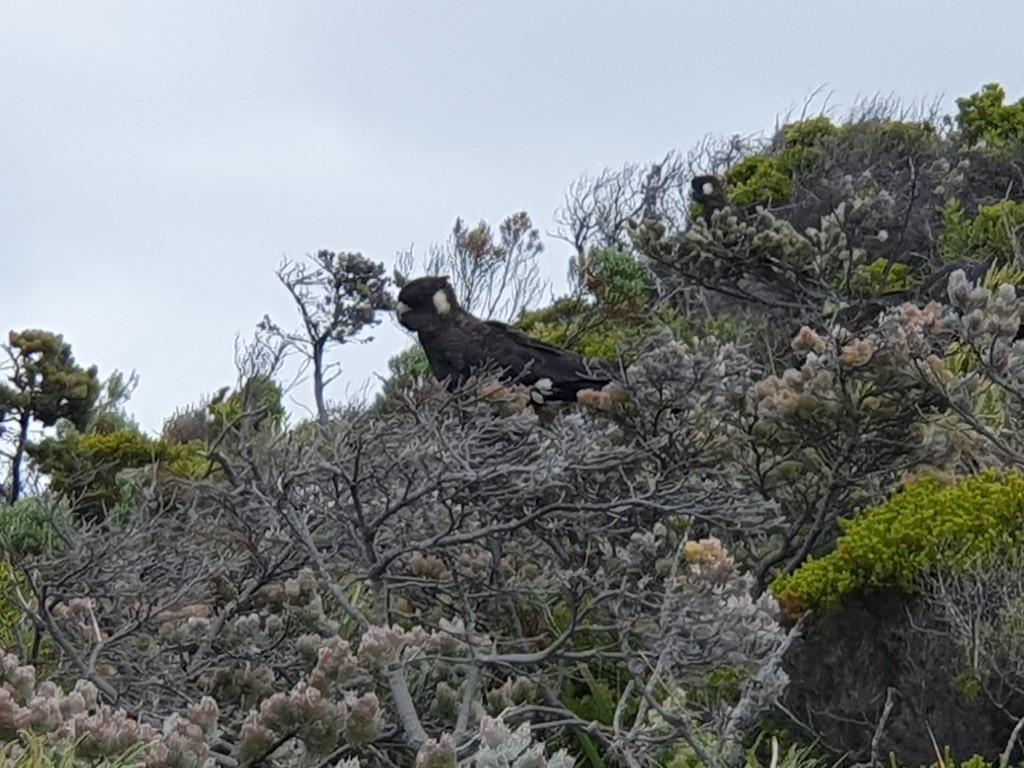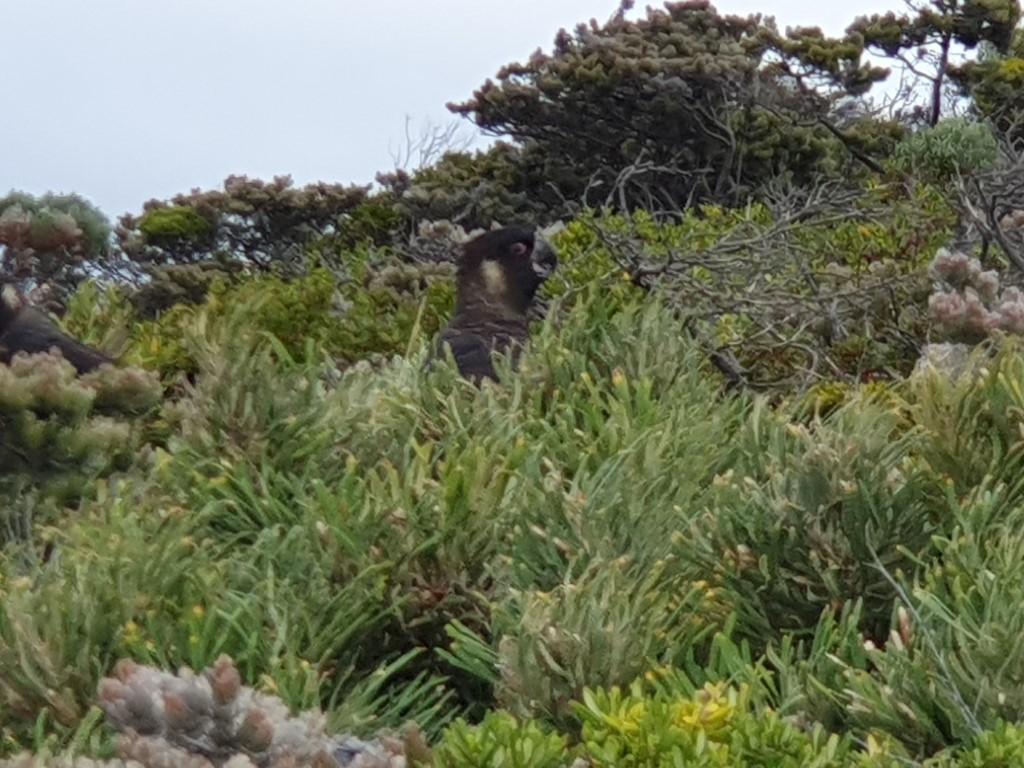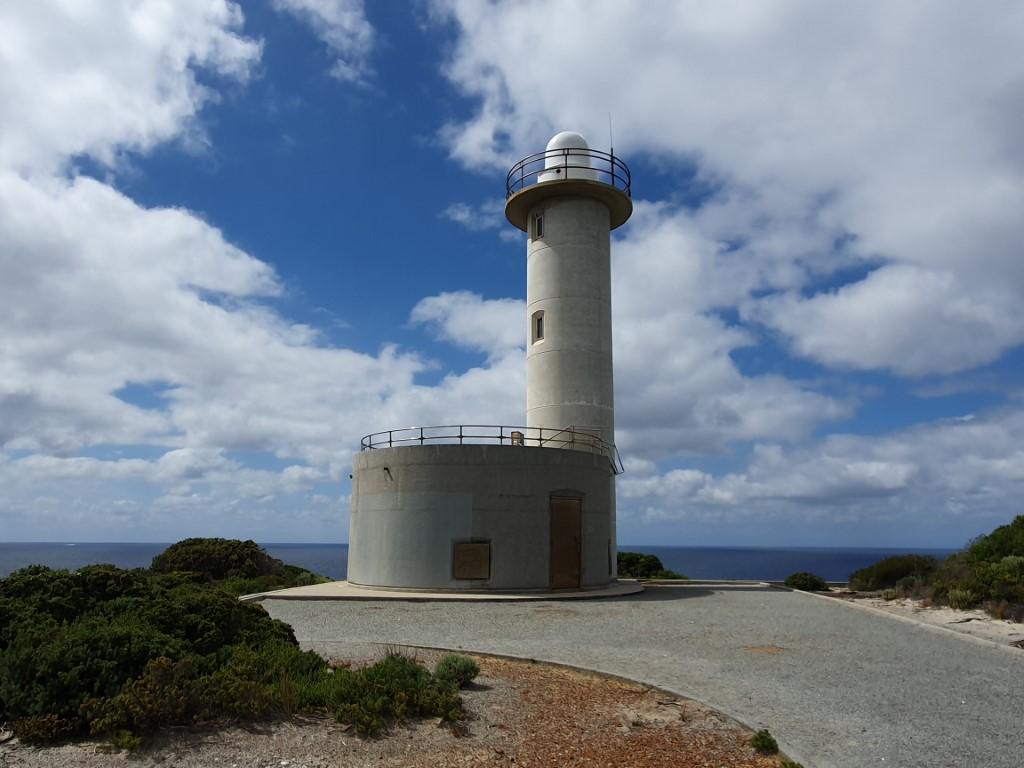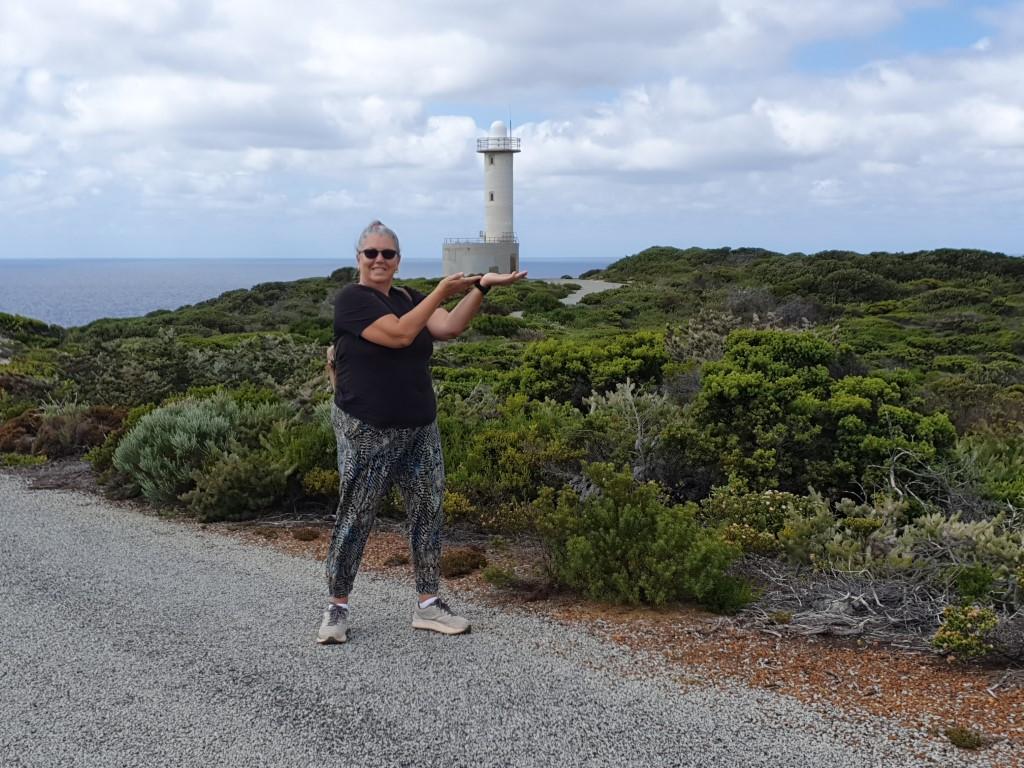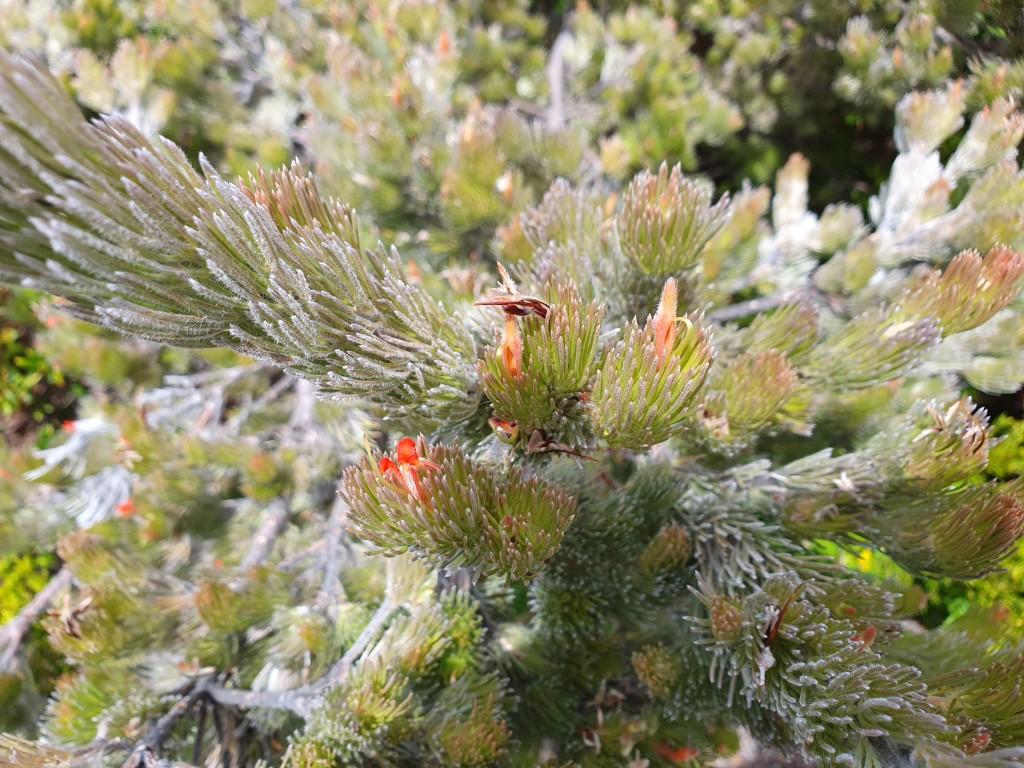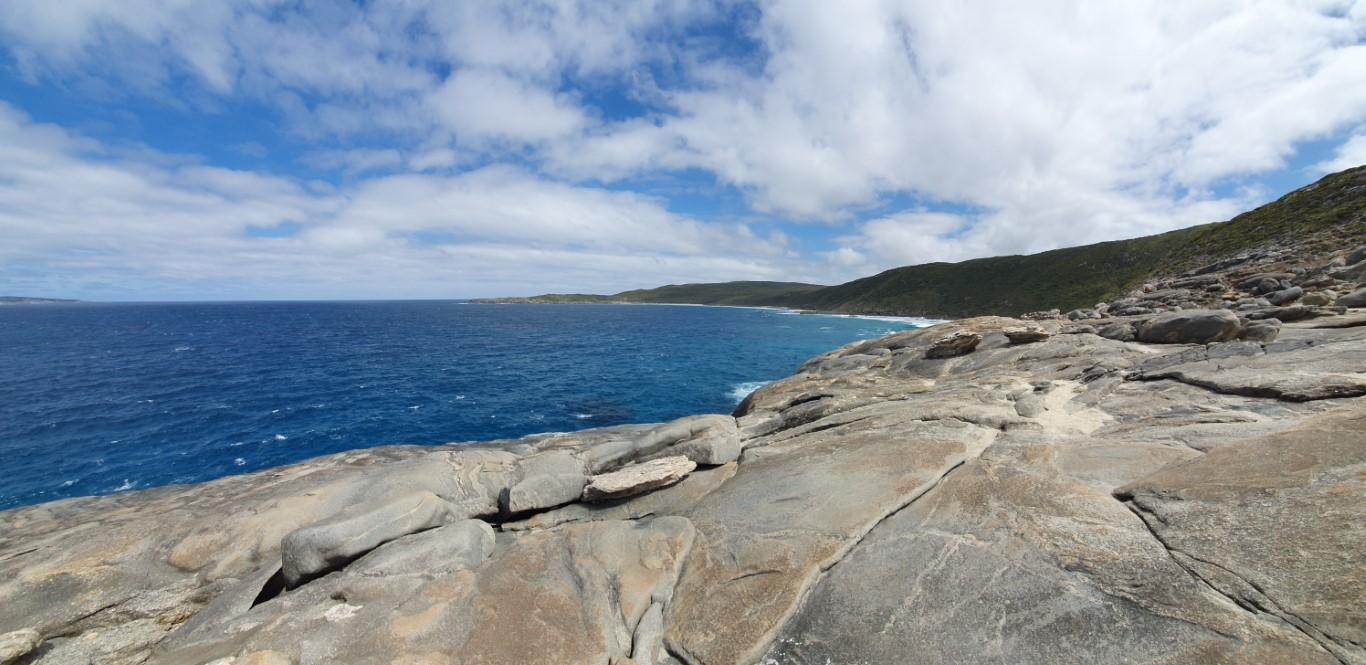
So… after all of the wonderful little regional towns of the Western Australia Wheat Belt we dropped into Albany at the very bottom of the state. Albany is a historic town and was once the whaling capital of the Southern hemisphere.
It was good to see the ocean once again after our time in the Western Australian Wheat Belt. But the cost of seeing the ocean was a return to cooler temperatures, which to be honest were not all that cold.

Albany itself is quite a sprawling town and we camped at Rose Gardens Beachside Holiday Park in a location called Emu Point. It was quite a bit away from the centre of town but nice and quiet. It was only a short walk to the marina, which was adjacent to a large park area and a fairly good cafe for coffee.

Near the marina there is a monument to Sammy The Seal. Sammy was a well loved character in Albany and quite friendly as far as seals go. Apparently he was tragically killed from a knife wound, which is why a monument has been erected for him in the place that he died. A sad ending but fondly remembered.

Another natural curio in Albany is Dog Rock. It is a very large granite outcrop with the main road on one side and a small shopping centre on the other. It looks for all the world like the head of a Basset Hound sticking up out of the ground with that distinctive ‘hang-dog’ expression that hounds have.
The Albany town centre consists of three main areas:
- the newer part of the town with supermarkets, shopping centres, etc.
- the museum district; and
- the older historic part.
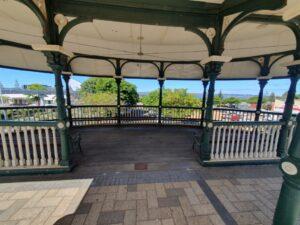
The historic part of the town is centred around York Street and Stirling Terrace. Stirling Terrace sits on a high rock terrace area and has a long row of heritage style shops and an ornate half rotunda viewing platform that provides views over Queens Park, the port and the museum district. We spent a morning wandering around it and enjoying a coffee at one of the quaint cafes near the rotunda.
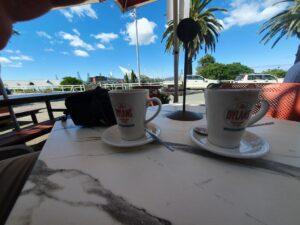
Although it is a sizable town Albany still retains the feeling of remoteness that must have been much stronger back in the height of the whaling industry. This is accentuated by being at the southern extremity of the state and gives it a personality that is different to the other Western Australian towns and cities that we have visited. In some respescts it feels more like Victoria and South Australia than Western Australia. It has a vibe all of its own and we enjoyed our time there immensely…
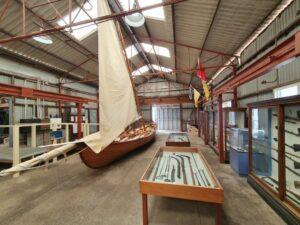
Without a doubt, the historic Discovery Bay Whaling Station is the star attraction of the Albany region. This carefully preserved whale processing factory precinct is a proud part of Albany‘s history and the primary reason that the town was established.
And, whilst whaling is now a defunct and regrettable industry, the Discovery Bay Whaling Station manages to walk the line between being proud of its past whilst acknowledging the sadness and brutality that was modern whaling.
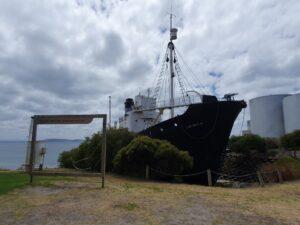
The centrepiece of the factory precinct is the Cheynes IV, a ship of the whaling fleet in permanent dry-dock and kept in pristine condition. We walked through every part of the vessel and saw first hand how harsh, difficult and trying conditions must have been when out at sea chasing down whales.

When the whaling industry was ceased, the workers at Discovery Bay essentially downed their tools on the last day and walked away from the site to seek new jobs. The factory precinct itself was therefore left in exactly the state it was on that day. It has been preserved beautifully and in superb detail. It commemorates the whalers and factory workers, and their harsh working conditions but also acknowledges the ugliness of the industry and its necessity in those times.

There were some moving video interviews of former whalers who describe their pride in the work they performed but also expressing regret and remorse for they way in which the killing of whales took place. It was what they did to feed their families and keep a roof over their heads. And if not them then it would have been someone else.
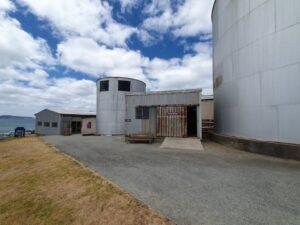
Discovery Bay Whaling Station preserves the history of whaling but and also uses the entire facility in a revamped way to educate about whales and marin mammals. The whale oil storage tanks have been converted into small theatres featuring short documentaries and if you concentrate you can still get a slight whiff of the whale oil that completely permeated the tank walls.
One of the truly impressive displays is the complete skeletons of a Blue Whale and Humpback Whale side-by-side and a Sperm Whale. The Blue Whale absolutely dwarfs the Humpback, which is immense in its own right. The Sperm Whale skeleton contrasts the difference between toothed whales and baleen whales (filter feeders).
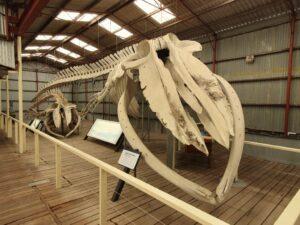
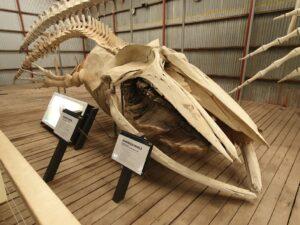
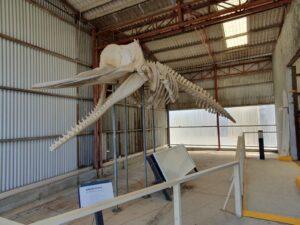
Everything about Discovery Bay Whaling Station is done well and combines to tell a proud story of a now defunct industry that Albany was built on. And whilst the whalers have moved on to other professions and industries, the Discovery Bay Whaling Station stands as a superb reminder of the past.
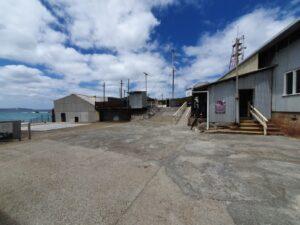
One of the funny stories that sticks with us is of a flenser, a worker who cuts up the whale for processing. When whales were brought into the station for processing they were stored offshore until they could be brought up onto the flensing deck. Because of this the carcasses attracted shark and in particular White Pointers. Shark fishing was a favourite weekend activity for a lot of the workers and some huge Great Whites were caught in Discovery Bay. Anyway… This particular flenser would have a swim, with his dog, every single day after work of the dock near the flensing deck and never once had an encounter with a shark. That’s brave with a capital ‘B’.
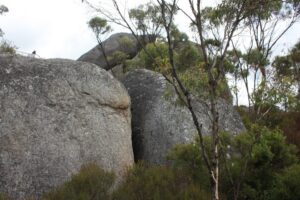
One of the best natural features in the Great Southern Region is Castle Rock. This is a massive granite outcrop with magnificent panoramic views south to Albany.
Castle Rock was something of a surprise to us. We were looking for something to do that involved a bit of driving, a bit of walking and something look at it and Castle Rock delivered that in spades…
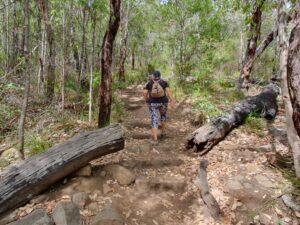
The drive there was quite picturesque taking us up through Porongorup and some beautiful big tree country. To get to Castle Rock you need to undertake fairly decent 2.5km bushwalk that rises continually amongst the Blue Gums.
At the end of the walk you come to a massive granite outcrop with a huge egg shaped balancing rock that really does seem to defy gravity. The rock itself is quite stunning due to its sheer immensity and contrasting tiny footprint on the base rock and it’s quite daunting to stand beneath even for a few brief moments to get a photo…

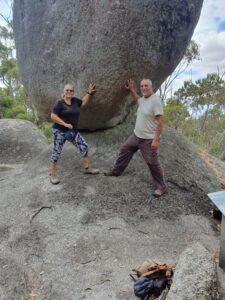
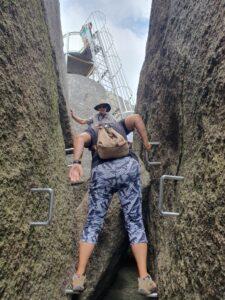
It’s at the balancing rock that you get your first good look at Castle Rock itself. The massive round-top boulder rises above you towards the sky and wear a halo, which is the Granite Skywalk. But before you get to the skywalk you need to walk around the base of Castle Rock and up a steep, tricky rock scramble and then climb some strategically placed climbing rungs to get to the base of the skywalk.
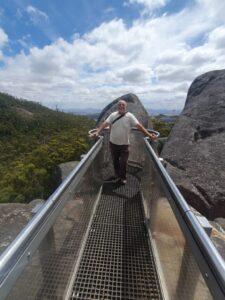
After all that you arrive at a caged ladder that you can climb up to the skywalk itself. Jo gave it a brave try but only managed to get five rungs up before acrophobia got the better of her and she had to climb back down. Rob managed to beat his own acrophobia and make it to the top, which proved to be absolutely exhilarating.
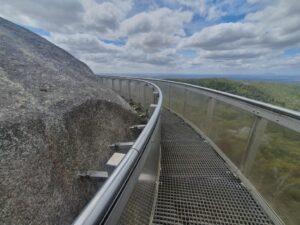
The skywalk is a narrow metal mesh walkway that is drilled and glued into the side of rock face. You can see, through the mesh below your feet, the stunning and dizzying drop immediately below you. For an acrophobic it is in equal parts daunting and breath-taking… but absolutely worth the fear and anxiety. You quickly become accustomed to sensations and gradually relax so that you can appreciate the grand vista that appears before you.
It was a brave effort by Jo despite not making it to the top of the skywalk. There were plenty of people left behind who didn’t make it past the rock scramble and the climbing rungs.
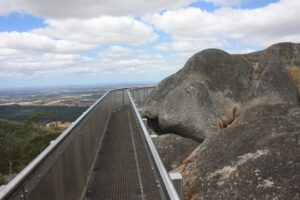
From the skywalk you can see all the way back to Albany and the ocean, a 45 minute drive away. Spectacular doesn’t properly describe the vista before you and it is a very fitting reward for the effort expended to get there.
After a few more photos and a last look at the view from the lower viewing area we trudged back along the 2.5km trail to the carpark, a little exhausted but all the more richer for having visited this wonderful natural formation.
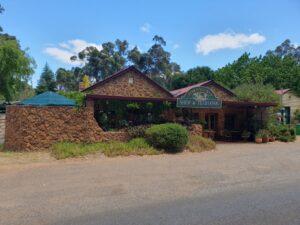
The drive home took us back through Porongorup and stopped in at the Porongorupup Inn, Shop and Tearooms for a late lunch. This was a wonderfully eccentric place that was a little run down and sold all the usual touristy knick knacks. We sat down and ordered a hot chicken roll not expecting too much but were pleasantly surprised when we received two very fresh and succulent chicken rolls filled with warm, sticky meat. Just perfect after our mornings exertions.
This was a terrific and very satisfying day trip for both of us. One of the great things about travelling is finding places like this that aren’t all that well known but exceed all your expectations when you make the effort to visit them. Castle Rock will be a favourites list memory…

The museum district sits down below the terrace area of the old town on the ocean side . There a high walkway that takes you from the terrace over the main highway to the Albany Entertainment Centre. From there you can head down to the museum district, which is dominated by the Brig Amity, a beautiful full-sized replica of the original brig kept in dry-dock beside a large lake area. The original was wrecked north of Tasmania in 1845.

You can wander around the top deck of the Amity at your leisure and imagine undertaking an ocean voyage in the mid1800’s. You can also pay for a below decks tour but we opted not to do this one on this occasion. It was enough to marvel at the complexity of the rigging and workmanship of the planking, decking. Although the brig was a sound ship back in the day and would have been relatively comfortable for the Scottish emigrants that bought her to emigrate to Australia, those people were made of sterner stuff than we are today…

The Brig Amity is maintained by the Museum of the Great Southern, which has a series of buildings nearby encompassing a broad range of all things Albany. The Residency Building was originally a store and office for the nearby convict-hiring depot. It houses a collection of historical artefacts from the 1800’s and was originally and gives you a feel for early Albany prior to whaling. Albany, originally, was a military outpost for New South Wales and would have become the state capital until Perth got the nod.
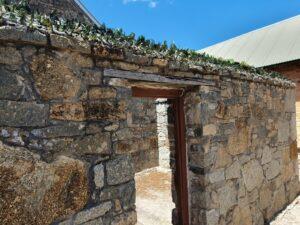
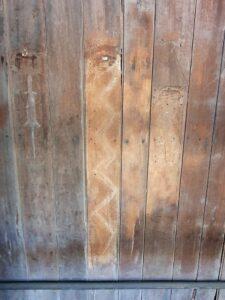
The convict gaol nearby is maintained in historical accuracy with some of the original walls, made of convict bricks, still fully intact. There is even a gallows there that serves as a reminder of the severity of convict life back in the day. The gaol was also used to hold indigenous ‘prisoners’ who were segregated into a different cell lined with wooden boards. This would have been mild torture for those people and sadly you can see carved markings scratched into the boards depicting aboriginal stories and motifs.
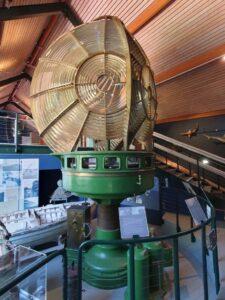
The Eclipse Building houses more contemporary displays including a lighthouse display, fishing display and an fish wall that identifies all of the fish of the region. The centre-piece is a Fresnel Lens from a lighthouse. Similar to the one we saw back in Carnarvon, these lens are a jewel-like thing of beauty when viewed up close.
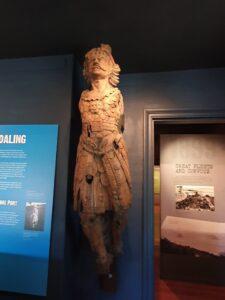
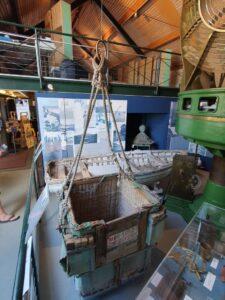
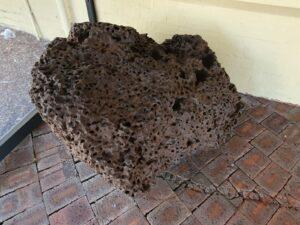
Other interesting exhibits include the aft figurehead from the wreck of The Agnes, a ship transfer basket and a very large meteorite. The Agnes figurehead had apparently been ‘lying in state’ for many years under a landowners bed after his wife made him put it away… The ship transfer basket was a bit like a wicker-work baloon basket used to transfer people and cargo on and off ships. Apparently it was an extremely dangerous device to be carried in. The meteorite is a rather large black chunk of pock-marked ironstone known as the Mundrabilla Meteorite. It fell to Earth in 1911 on the Nullarbor Plain and weighs over12 tonnes.
There is a little bit of something for everyone at the Museum of the Great Southern.
Torndirrup National Park is another of Albany‘s natural wonders. Like Castle Rock, it contains a number of magnificent granite rock formations including the Natural Bridge and The Gap.
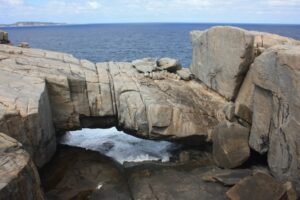
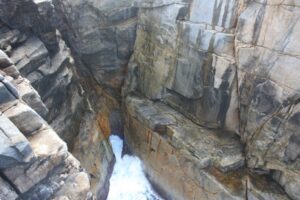
The Gap is a huge cleft in the granite sea cliff where the ocean waves rush in and out causing a spectacular swirling surge of white water. The Natural Bridge is, of course, a massive slab of granite between granite side walls undercut over millennia by the ocean waves. It is very spectacular as the white water rushes over and recedes from base rock below. Viewing platforms allow you to get very close to both formations and once again be awe-inspired by the timeless power and beauty of nature…
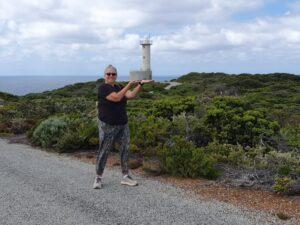
And, of course. it wouldn’t be rocky coastline without visiting a lighthouse… The Cave Point Lighthouse is situated in the National Park and is now fitted with radome (radar housing) instead of a light.
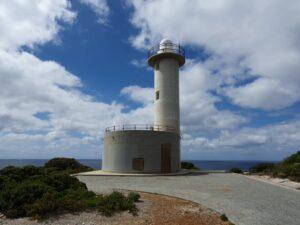
It is a relatively modern lighthouse built as a round concrete tower in 1976. The light was removed in 1994 and converted to radar. It’s not especially tall but does stand proud over the rocky cliffs by the sea, which gives it a very Western Australian feel…
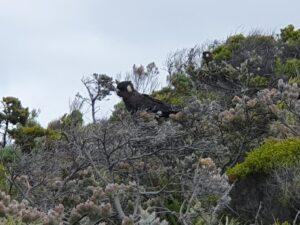
We also got up close with some Black Cockatoos along the path, which we believe were Baudin’s Black Cockatoos. They sat in happily in the scrubby trees beside the path and were happy to pose for a photo or two (as most cockatoos seem to like to do). They were quite sizable and probably slightly larger than the average white cockatoo that we see back home. They also have the same bright inquisitive nature that cocky’s seem to possess.
Torndirrup National Park, although very different to the red rocky coastline of the western side of the state was still a very wild and natural place. Being on the southerly edge it was more like the South Australian coastline but none-the-less beautiful…

